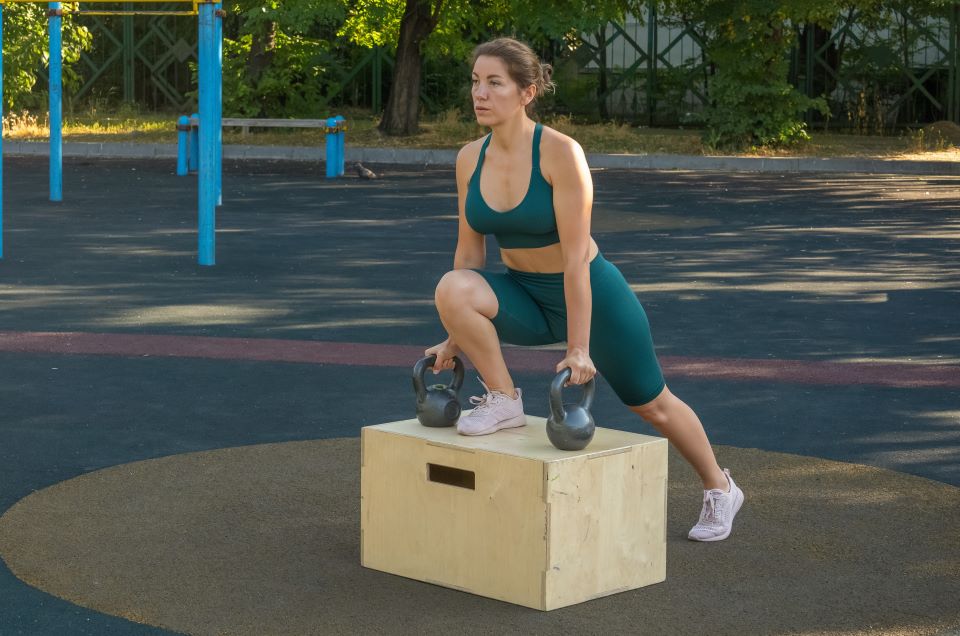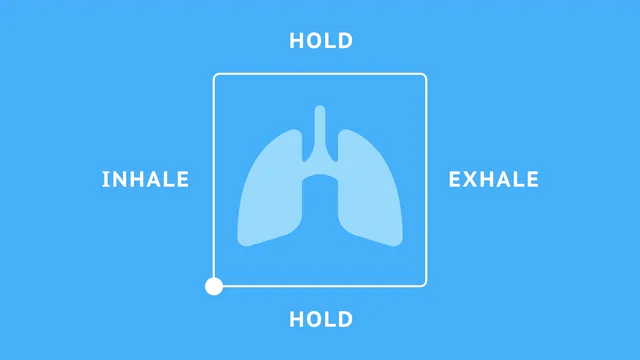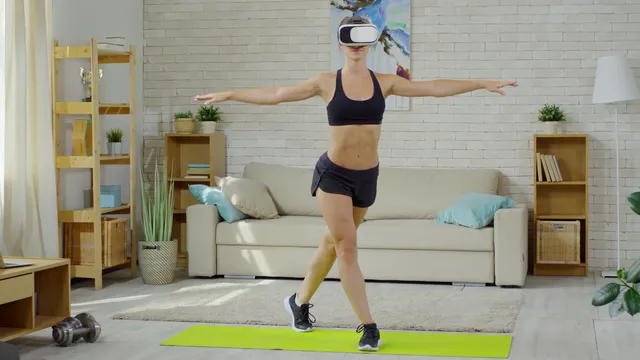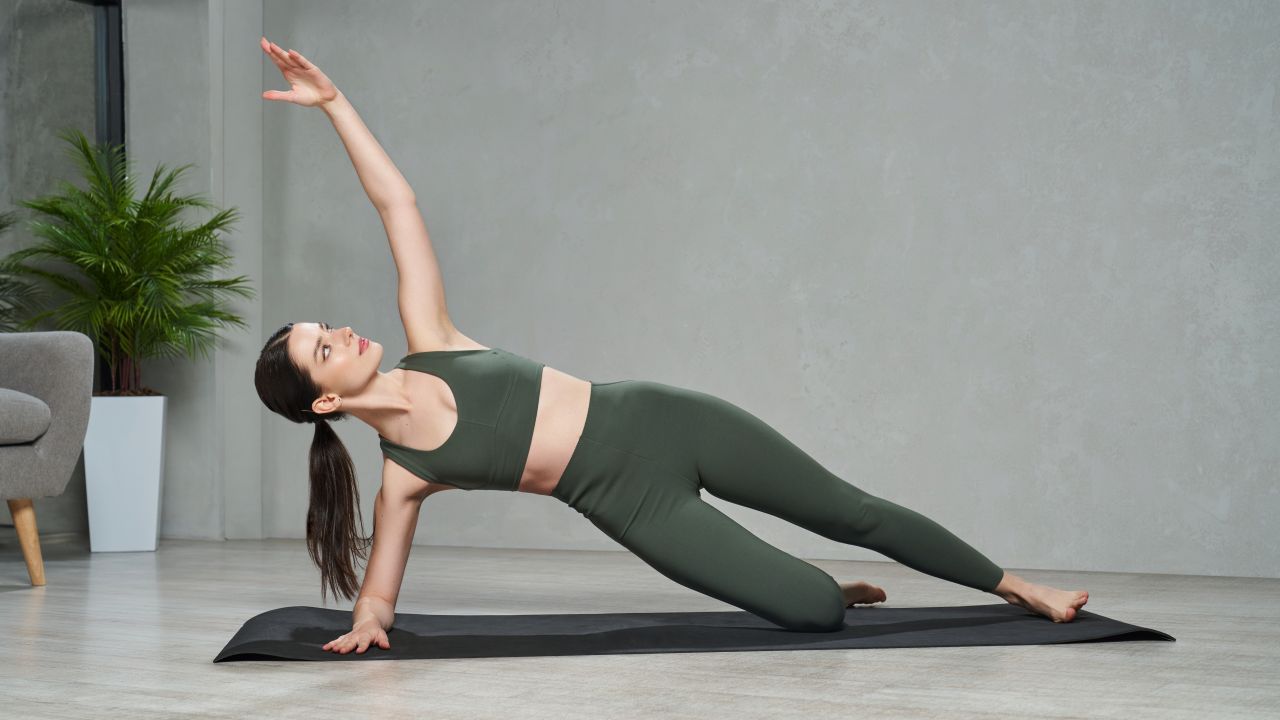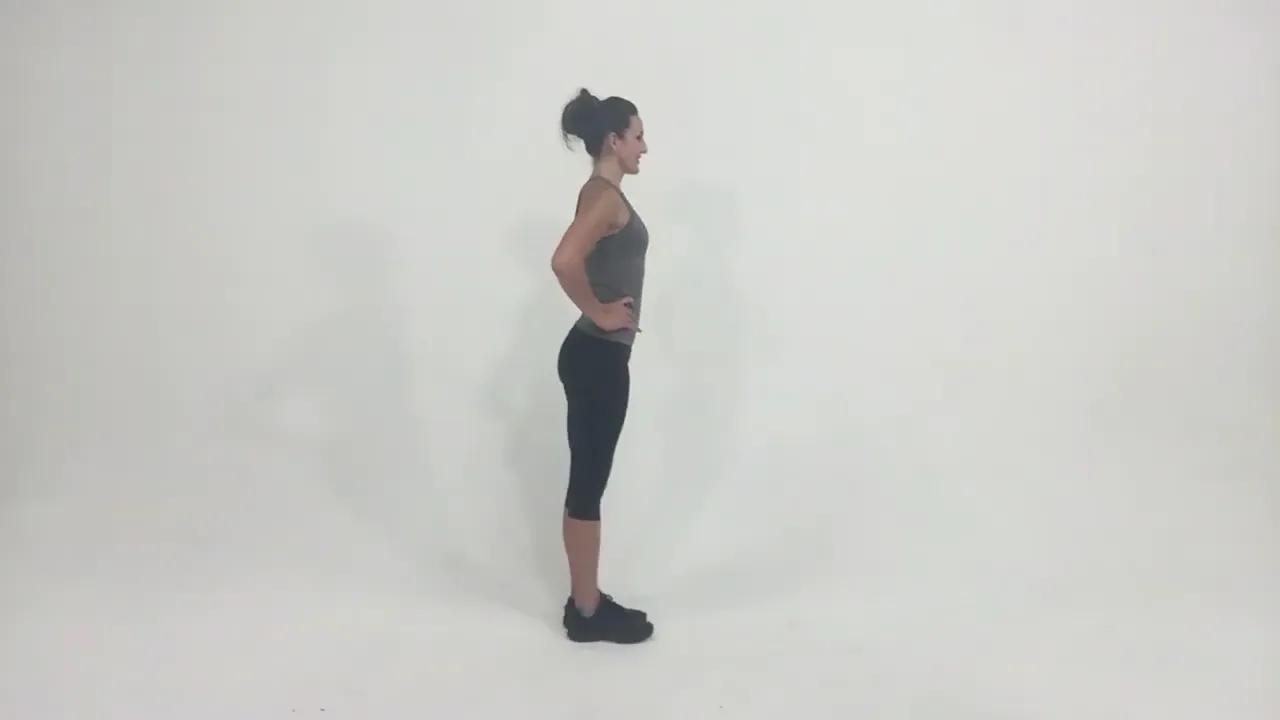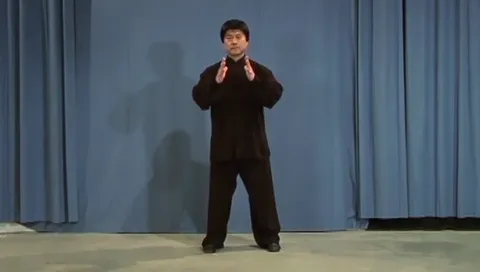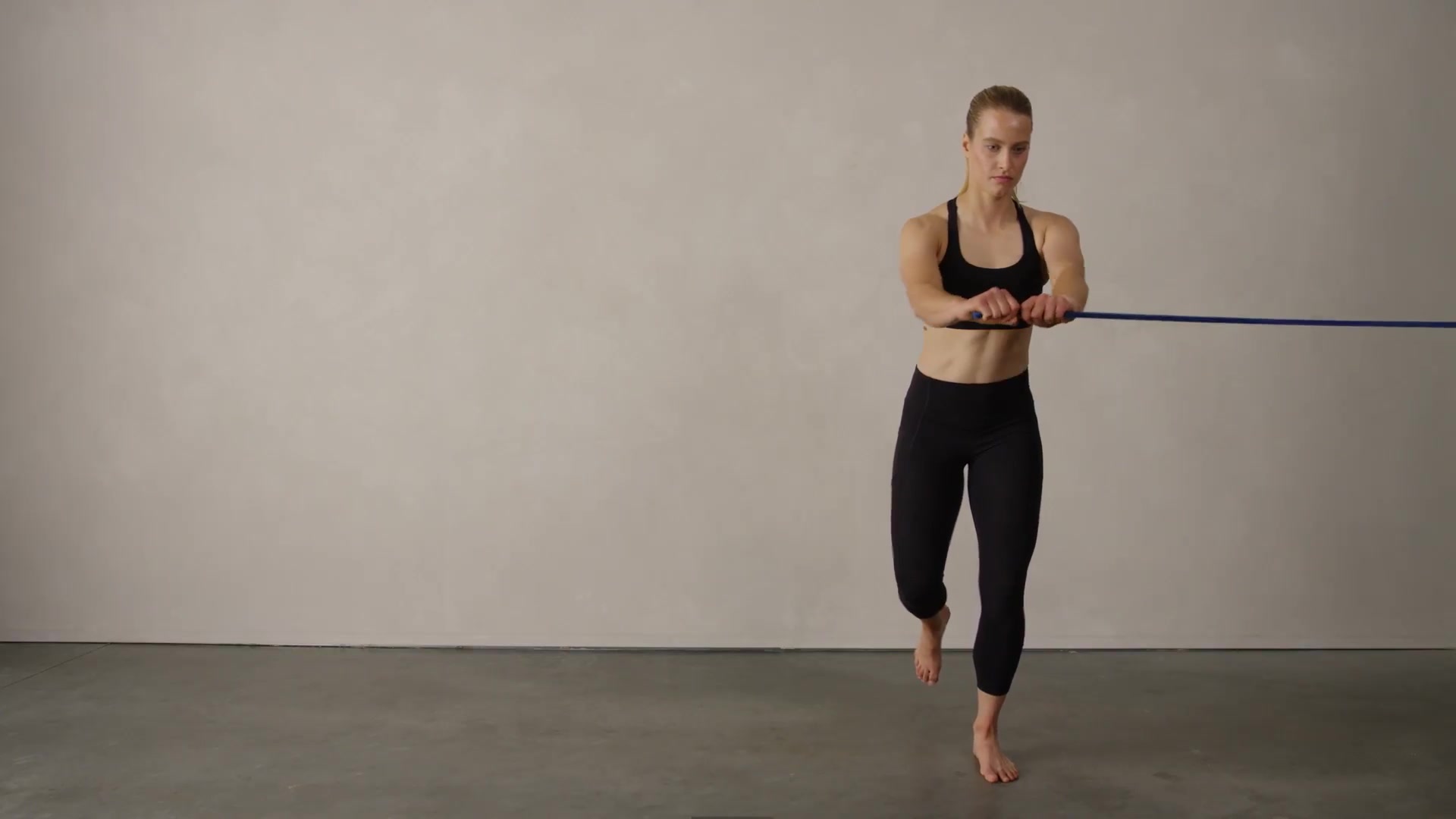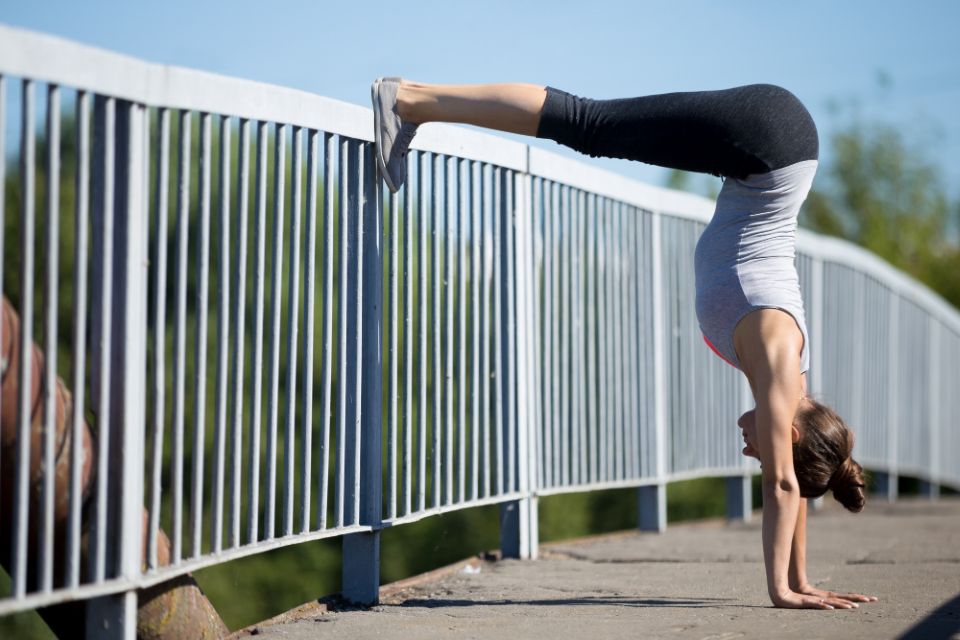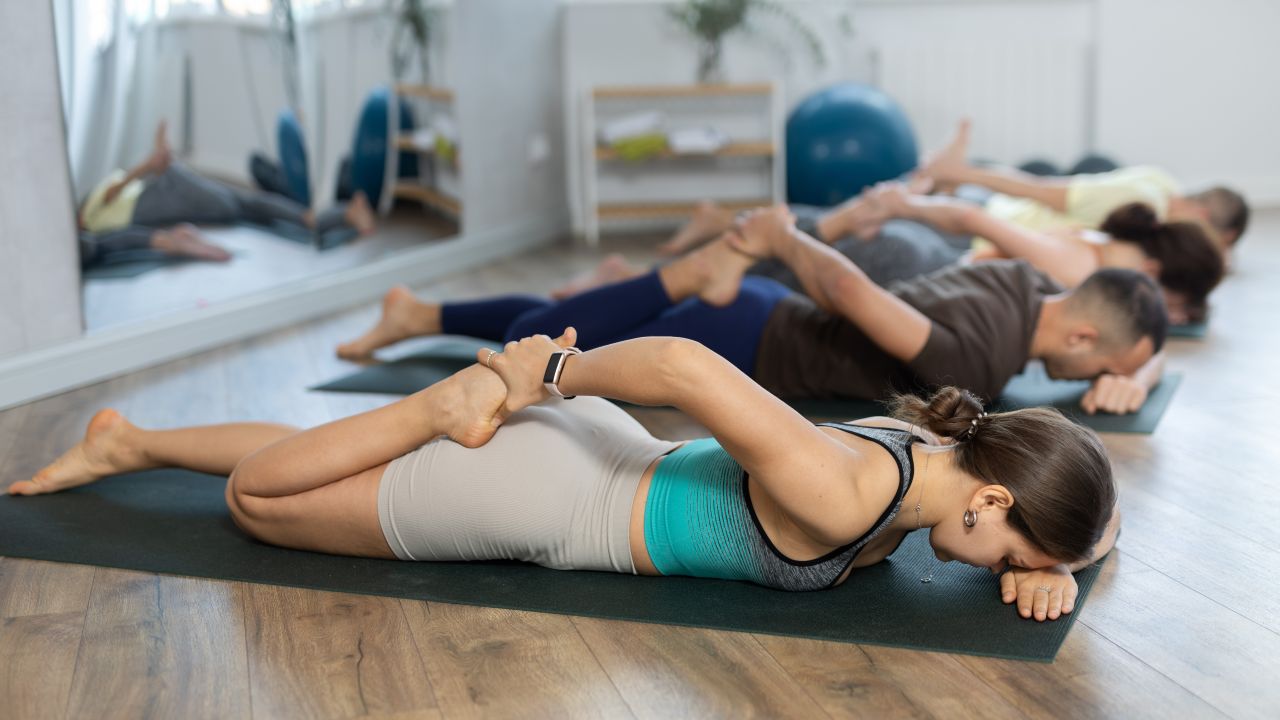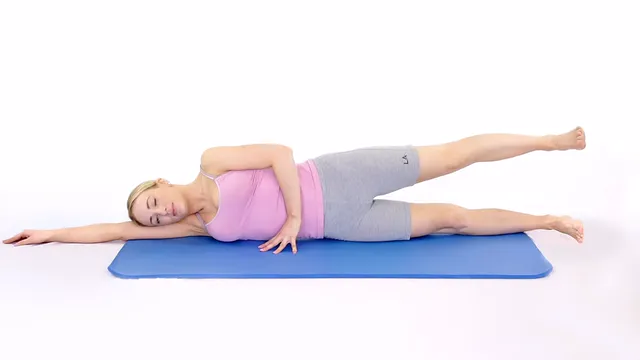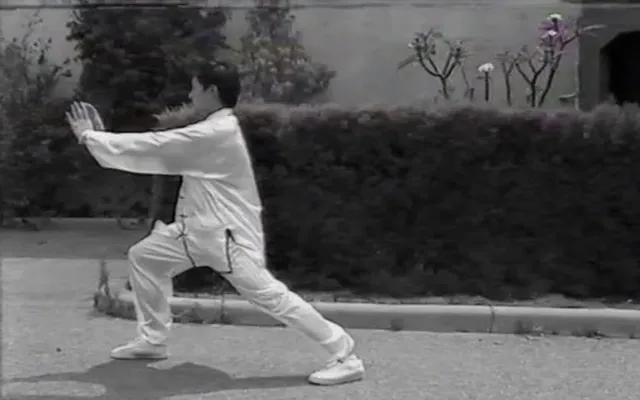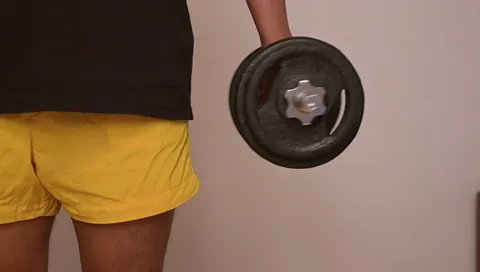Filter Exercises
90/90 Get Ups/Downs
Notes - aka: Z-Sit Get Ups/Downs.
90/90 Hip Lifts
Notes - aka: 90/90 Leg Lifts; Z-Sit Hip Lifts; Z-Sit Leg Lifts..
90/90 Front Leg Lift

90/90 Front/Back Leg Lift

90/90 Hip Stretches
Notes - aka: Z-Sit Stretches.
Active Hangs
Notes - Pronated and supinated grips work slightly different muscles.
Pronated Grip Active Hang

Supinated Grip Active Hang

Acupressure
Affirmations
Agility Ladder Drills
Agility Ladder Drills

Alphabet Saccades
Visual Skills - Eye Movement Control, Visual Sequential Memory, Visual Form Recognition
Notes - aka: Alphabet Tracking; Letter Tracking.
Alphabet Saccades w/ Underlining
- Underline all the letters beginning on the left end of the top line. Circle the first lower or upper case letter "a" that you come to in the first line. Next, circle the first lower or upper case "b" after the "a". Continue through the alphabet until you have found all the letters of the alphabet in sequence.
- There will be a letter or letters in each line that you will need. If you go through an entire line without finding a letter you are looking for, you'll need to go back and locate the letter you missed. You will not be able to complete the exercise using all the letters of the alphabet unless you locate each letter in sequence.
Alphabet Saccades
- Time how long it takes you to find the entire alphabet.
- Find the first lower or upper case letter "a" that you come to in the first line and circle it. Next, find the first lower or upper case "b" after the "a" and circle it. Continue through the alphabet until you have found all the letters of the alphabet in sequence.
- There will be a letter or letters in each line that you will need. If you go through an entire line without finding a letter you are looking for, you'll need to go back and locate the letter you missed. You will not be able to complete the exercise using all the letters of the alphabet unless you locate each letter in sequence.
Ankle Dissociation
Ankle Sagital/Frontal Dissociation

Ankle Eversion Strengthening
Notes - aka: Peroneal Strengthening. alt: Ankle Inversion Strengthening.
Seated Peroneal Strengthening

Standing Peroneal Strengthening

Ankle Inversion Strengthening
Notes - alt: Ankle Eversion Strengthening.
Ankle Inversion Strengthening

Ankle Inversion/Eversion Strengthening
Notes - alt: Ankle Eversion Strengthening, Ankle Inversion Strengthening
Ankle Inversion/Eversion Strengthening

Ankle Mobilization
Ankle Sprains
Ankle Sprains

Ankle Taping
Aperture Rule Trainer
Visual Skills - Convergence, Divergence
Arch Hangs
Notes - Pronated and supinated grips work slightly different muscles.
Pronated Grip Arch Hang

Supinated Grip Arch Hang

Archer Stretch
Arm Bar
Arm Bar

Arm Circles
Arm Wall Slides
Notes - aka: Arm Wall Glides
Arm Wall Slides

Arnold Presses
⚠ Arnold Press
- Incline Bench

⚠ One-Arm Arnold Press
- Incline Bench

Baby Crow Stretch
Notes - Not the same as Crow, the weight is placed on forearems, not hands. Using Ragdoll as prerequisite and not Forward Fold because the knees are bent.
Back Extensions
⚠ Back Hyperextensions

Back Planks
Balance Board
⚠ Balance Board

Balancing Table Stretch
Ball Slam
Banana Stretch
Banded 3-Pt Toe Taps
Banded Deep Squats
Notes - aka: Garland Pose; Malasana.
Banded Deep Squat Hold

Banded Deep Squats

Banded Overhead Reaches
Banded Overhead Reach

Banded Rib Cage Expansion
Banded Squats
Notes - alt: Squats + Adductor Squeeze.
Banded Squat Hold

Banded Squats

Barrel Card
Visual Skills - Convergence, Divergence
Bear Crawl
Beast + Loaded Beast
Notes - alt: Child's Stretch. Knees are kept elevated off of the ground.
Beast to Loaded Beast

Beast Pushups
Beast Pushups
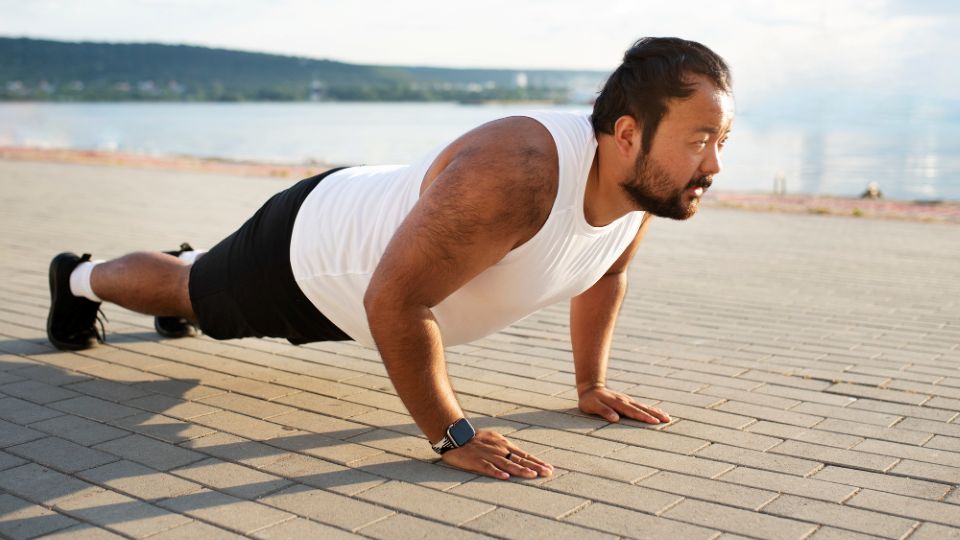
Bent Over Rows
Dumbbell Rows
- Flat Bench
- Incline Bench
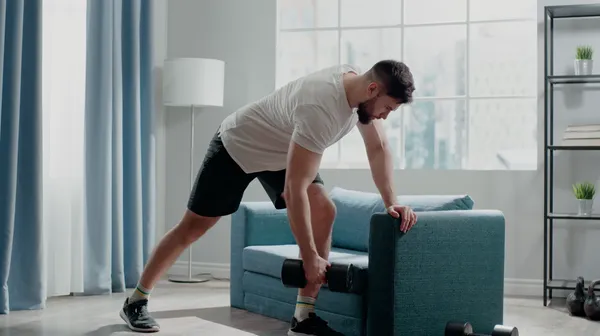
⚠ Bent Over Rows

Bicep Curls
Bicep Curl

Bird Dogs
Thoracic Skills - Thoracic Dissociation
Bird of Paradise
Bird Watching
Visual Skills - Eye Movement Control
BJJ Quad Stretch
Boat Stretch
Body Saw
Bodyweight Lunges
Notes - More sections b/c it's unweighted.
Bodyweight Squats
Notes - More sections b/c it's unweighted.
Assisted Squats

Front Staggered Squats

Assisted One-Leg Squats

One-Leg Box Squats

One-Leg Squats

Bottom Up Holds
Bottom Up Holds

Bounds
Bow Stretches
Notes - aka: Upward Bow Pose; Wheel Pose.
Box Breathing
Box Jumps
⚠ Box Jumps

Boxer Shuffle
Bridges
Wall Bridges

Yoga Bridge

Incline Bridges

Head Bridges

Full Bridges

Wheel Bridges

Wheel Stretch

One-Leg Wheel Stretch

Brock String
Visual Skills - Eye Teaming, Convergence, Divergence
Brock String: Bead Jumping
- Tie one end of your Brock string to a distant object, close to eye level. Position the beads so one is about 12 inches from the handle, the second is about 5 feet away, and the third bead at about 8 feet away. Hold the handle of the string to the tip of your nose, not left or right of your nose.
- Look at the bead closest to your nose. The string should form an X that crosses as it passes through the bead. The other beads should appear blurred and doubled. The double vision tells you your eyes are pointing in the correct direction: the place on the string where you see single is where your eyes are pointing.
- Next, look at the middle bead. You should see the string making an X through the single bead.
- When looking at the far bead, you may see two strings making a Λ toward the bead, intersecting at the bead. You may or may not see two strings on the far side of the bead.
- The strings should appear to cross exactly at the bead you are looking at. Everything in front or behind should be doubled.
- Look from one bead to the next while achieving proper fusion each time. Vary the positions of the beads. Once this is easily done, look away from the bead at a distant object, then back at the bead, quickly regaining fusion.
- When you are working with the Brock string, try to be aware of objects around you. Do not "tunnel in" to see just the bead or beads and the string. Having something moving near you can help.
- If the strings cross in front of the bead, blink your eyes. Try to relax your gaze: you'll feel like you are looking slightly behind the bead. You can also try to move the bead closer or jiggle the string slightly.
- If the strings cross behind the bead, try to pull your eyes in toward your nose. You may feel like you are looking slightly in front of the bead. however, if you can get the strings to cross right at the bead and you see only one bead, that is exactly where your eyes are looking. You may need to move the bead slightly farther back.
- If one of the strings in front and/or behind a bead disappears, the image from one eye is being supressed.
- If the left string disappears in front of the bead or the right string disappears behind the bead, the right eye is supressing. If the right string disappears before the bead or the left string disappears behind the bead, the left eye is supressing.
- If supression occurs, try slightly jiggling the string, covering and uncovering one eye then the other, and try looking at the Brock string while wearing red/green glasses.
- While wearing red/green glasses with the red lens over your right eye, the string that looks like it starts in front of your left eye should appear to be red-ish (it is seen with your right eye) and the string that looks like it starts in front of your right eye should appear to be green or blue-ish (it is seen with your left eye).

Brock String: Bead Slides
- Tie one end of your Brock string to a distant object, close to eye level. Position the beads so one is about 12 inches from the handle, the second is about 5 feet away, and the third bead at about 8 feet away. Hold the handle of the string to the tip of your nose, not left or right of your nose.
- Look at the bead closest to your nose. The string should form an X that crosses as it passes through the bead. The other beads should appear blurred and doubled. The double vision tells you your eyes are pointing in the correct direction: the place on the string where you see single is where your eyes are pointing.
- Next, look at the middle bead. You should see the string making an X through the single bead.
- When looking at the far bead, you may see two strings making a Λ toward the bead, intersecting at the bead. You may or may not see two strings on the far side of the bead.
- The strings should appear to cross exactly at the bead you are looking at. Everything in front or behind should be doubled.
- Start with the near bead positioned about 16-18 inches from your nose. Slide it slowly toward your nose, then slowly back , maintaining fusion the entire time. Stop moving the bead if the bead doubles or a string disappears: regain fusion before continuing to move the bead.
- When you are working with the Brock string, try to be aware of objects around you. Do not "tunnel in" to see just the bead or beads and the string. Having something moving near you can help.
- If the strings cross in front of the bead, blink your eyes. Try to relax your gaze: you'll feel like you are looking slightly behind the bead. You can also try to move the bead closer or jiggle the string slightly.
- If the strings cross behind the bead, try to pull your eyes in toward your nose. You may feel like you are looking slightly in front of the bead. however, if you can get the strings to cross right at the bead and you see only one bead, that is exactly where your eyes are looking. You may need to move the bead slightly farther back.
- If one of the strings in front and/or behind a bead disappears, the image from one eye is being supressed.
- If the left string disappears in front of the bead or the right string disappears behind the bead, the right eye is supressing. If the right string disappears before the bead or the left string disappears behind the bead, the left eye is supressing.
- If supression occurs, try slightly jiggling the string, covering and uncovering one eye then the other, and try looking at the Brock string while wearing red/green glasses.
- While wearing red/green glasses with the red lens over your right eye, the string that looks like it starts in front of your left eye should appear to be red-ish (it is seen with your right eye) and the string that looks like it starts in front of your right eye should appear to be green or blue-ish (it is seen with your left eye).

Brock String: Prism Jumps
- Tie one end of your Brock string to a distant object, close to eye level. Position the beads so one is about 12 inches from the handle, the second is about 5 feet away, and the third bead at about 8 feet away. Hold the handle of the string to the tip of your nose, not left or right of your nose.
- Look at the bead closest to your nose. The string should form an X that crosses as it passes through the bead. The other beads should appear blurred and doubled. The double vision tells you your eyes are pointing in the correct direction: the place on the string where you see single is where your eyes are pointing.
- Next, look at the middle bead. You should see the string making an X through the single bead.
- When looking at the far bead, you may see two strings making a Λ toward the bead, intersecting at the bead. You may or may not see two strings on the far side of the bead.
- The strings should appear to cross exactly at the bead you are looking at. Everything in front or behind should be doubled.
- Hold the prism up to you eye with the thick side of the prism facing your ears (base-out) while looking at the first bead. Once that bead looks single, take the prism away and regain fusion. Next, turn the prism so the thick end is facing your nose (base-in) while looking at the first bead.
- Once you are able to fuse with one eye, repeat with your other eye. Do this with each bead. If this is difficult, try moving the beads a bit closer to you. Repeat 4 times over each eye.
- Base-in prisms require divergence; base-out prisms require convergence.
- When you are working with the Brock string, try to be aware of objects around you. Do not "tunnel in" to see just the bead or beads and the string. Having something moving near you can help.
- If the strings cross in front of the bead, blink your eyes. Try to relax your gaze: you'll feel like you are looking slightly behind the bead. You can also try to move the bead closer or jiggle the string slightly.
- If the strings cross behind the bead, try to pull your eyes in toward your nose. You may feel like you are looking slightly in front of the bead. however, if you can get the strings to cross right at the bead and you see only one bead, that is exactly where your eyes are looking. You may need to move the bead slightly farther back.
- If one of the strings in front and/or behind a bead disappears, the image from one eye is being supressed.
- If the left string disappears in front of the bead or the right string disappears behind the bead, the right eye is supressing. If the right string disappears before the bead or the left string disappears behind the bead, the left eye is supressing.
- If supression occurs, try slightly jiggling the string, covering and uncovering one eye then the other, and try looking at the Brock string while wearing red/green glasses.
- While wearing red/green glasses with the red lens over your right eye, the string that looks like it starts in front of your left eye should appear to be red-ish (it is seen with your right eye) and the string that looks like it starts in front of your right eye should appear to be green or blue-ish (it is seen with your left eye).

Brock String: Bug on a String
- Tie one end of your Brock string to a distant object, close to eye level. Position the beads so one is about 12 inches from the handle, the second is about 5 feet away, and the third bead at about 8 feet away. Hold the handle of the string to the tip of your nose, not left or right of your nose.
- Look at the bead closest to your nose. The string should form an X that crosses as it passes through the bead. The other beads should appear blurred and doubled. The double vision tells you your eyes are pointing in the correct direction: the place on the string where you see single is where your eyes are pointing.
- Next, look at the middle bead. You should see the string making an X through the single bead.
- When looking at the far bead, you may see two strings making a Λ toward the bead, intersecting at the bead. You may or may not see two strings on the far side of the bead.
- The strings should appear to cross exactly at the bead you are looking at. Everything in front or behind should be doubled.
- Look at one of the beads and imagine a bug crawling from the bead toward your nose. Try to make the X of the two strings smoothly and slowly move toward your nose as it did when you were sliding the bead, then back out toward the bead.
- When you are working with the Brock string, try to be aware of objects around you. Do not "tunnel in" to see just the bead or beads and the string. Having something moving near you can help.
- If the strings cross in front of the bead, blink your eyes. Try to relax your gaze: you'll feel like you are looking slightly behind the bead. You can also try to move the bead closer or jiggle the string slightly.
- If the strings cross behind the bead, try to pull your eyes in toward your nose. You may feel like you are looking slightly in front of the bead. however, if you can get the strings to cross right at the bead and you see only one bead, that is exactly where your eyes are looking. You may need to move the bead slightly farther back.
- If one of the strings in front and/or behind a bead disappears, the image from one eye is being supressed.
- If the left string disappears in front of the bead or the right string disappears behind the bead, the right eye is supressing. If the right string disappears before the bead or the left string disappears behind the bead, the left eye is supressing.
- If supression occurs, try slightly jiggling the string, covering and uncovering one eye then the other, and try looking at the Brock string while wearing red/green glasses.
- While wearing red/green glasses with the red lens over your right eye, the string that looks like it starts in front of your left eye should appear to be red-ish (it is seen with your right eye) and the string that looks like it starts in front of your right eye should appear to be green or blue-ish (it is seen with your left eye).

Brock String: Stir the Pot
- Tie one end of your Brock string to a distant object, close to eye level. Position the beads so one is about 12 inches from the handle, the second is about 5 feet away, and the third bead at about 8 feet away. Hold the handle of the string to the tip of your nose, not left or right of your nose.
- Look at the bead closest to your nose. The string should form an X that crosses as it passes through the bead. The other beads should appear blurred and doubled. The double vision tells you your eyes are pointing in the correct direction: the place on the string where you see single is where your eyes are pointing.
- Next, look at the middle bead. You should see the string making an X through the single bead.
- When looking at the far bead, you may see two strings making a Λ toward the bead, intersecting at the bead. You may or may not see two strings on the far side of the bead.
- The strings should appear to cross exactly at the bead you are looking at. Everything in front or behind should be doubled.
- Ask someone to hold the far end of the Brock string, while standing on a chair or step stool. As they SLOWLY turn the end of the string in a wide circle, keep your eyes on each bead, one a time, and keep the bead single.
- When you are working with the Brock string, try to be aware of objects around you. Do not "tunnel in" to see just the bead or beads and the string. Having something moving near you can help.
- If the strings cross in front of the bead, blink your eyes. Try to relax your gaze: you'll feel like you are looking slightly behind the bead. You can also try to move the bead closer or jiggle the string slightly.
- If the strings cross behind the bead, try to pull your eyes in toward your nose. You may feel like you are looking slightly in front of the bead. however, if you can get the strings to cross right at the bead and you see only one bead, that is exactly where your eyes are looking. You may need to move the bead slightly farther back.
- If one of the strings in front and/or behind a bead disappears, the image from one eye is being supressed.
- If the left string disappears in front of the bead or the right string disappears behind the bead, the right eye is supressing. If the right string disappears before the bead or the left string disappears behind the bead, the left eye is supressing.
- If supression occurs, try slightly jiggling the string, covering and uncovering one eye then the other, and try looking at the Brock string while wearing red/green glasses.
- While wearing red/green glasses with the red lens over your right eye, the string that looks like it starts in front of your left eye should appear to be red-ish (it is seen with your right eye) and the string that looks like it starts in front of your right eye should appear to be green or blue-ish (it is seen with your left eye).

Bug Squash
Burpees
Butt Kicks
Butterfly Stretches
Notes - aka: Bound Angle Stretch; Cobbler’s Pose; Baddha Konasana.
Butterfly Stretches w/ Leg Reaches
Notes - aka: Bound Angle Stretch; Cobbler’s Pose; Baddha Konasana.
Calf Pedals
Notes - aka. Foot Pedals; Knee Pedals.
Calf Raises (Bent-Knee)
Notes - aka. ankle plantar flexion.
Calf Raises (Straight-Leg)
Notes - aka. ankle plantar flexion.
Calf Raises (Straight-Leg) + Big Toe Extension
Notes - aka. ankle plantar flexion.
One-Leg Straight-Leg Calf Raises w/ Big Toe Extension

Calf Smash
Camel Stretches
One-Arm Camel Stretch

⚠ Full Camel Stretch

⚠ Bound Camel Stretch

Camel Stretches w/ Eagle Arms
Camel Stretch w/ Eagle Arms

Cat Pulling its Tail Stretch
Cat/Cow Stretches
Thoracic Skills - Thoracic Flexion, Thoracic Extension, Thoracic Dissociation
Notes - aka: Cat Cow Stretches; Cat-Cow Stretches..
Seated Cat/Cow Stretch

Sumo Cat/Cow

Cat/Cow Stretch

Central-Peripheral Saccades
Visual Skills - Eye Movement Control, Peripheral Vision
Notes - aka. Central-Peripheral ABCs
Central-Peripheral Numbers
- Find and point to the A. Keep your eyes on the letter A, and with your peripheral or side vision, locate the letter B. Take your time. Peripheral vision is not detail oriented; finding a specific letter should take a bit; blur is ok in your periphery.
- Once you think you have the located the B, touch it. Now, move your eyes to where you are pointing.
- Did you accurately find the letter B?
- Are you touching it or within about a half inch or so from the letter?
- Did you mix up letters with similar lines (E and F, C and G, X and Y, etc.)?
- Slow down and breathe as you use your peripheral vision.
- Keep pointing to the letter B. And locate the letter C with your peripheral vision. Don't look at the C until you have touched it.
- Do this working through the alphabet from Z to A.
- Take your time. This activity is not about speed, working on your central (detail-oriented) vision, or on accurate eye jumps. Breathe.

Central-Peripheral ABCs
- Find and point to the A. Keep your eyes on the letter A, and with your peripheral or side vision, locate the letter B. Take your time. Peripheral vision is not detail oriented; finding a specific letter should take a bit; blur is ok in your periphery.
- Once you think you have the located the B, touch it. Now, move your eyes to where you are pointing.
- Did you accurately find the letter B?
- Are you touching it or within about a half inch or so from the letter?
- Did you mix up letters with similar lines (E and F, C and G, X and Y, etc.)?
- Slow down and breathe as you use your peripheral vision.
- Keep pointing to the letter B. And locate the letter C with your peripheral vision. Don't look at the C until you have touched it.
- Do this working through the alphabet from Z to A.
- Take your time. This activity is not about speed, working on your central (detail-oriented) vision, or on accurate eye jumps. Breathe.

Central-Peripheral Scattered Numbers
- Find and point to the A. Keep your eyes on the letter A, and with your peripheral or side vision, locate the letter B. Take your time. Peripheral vision is not detail oriented; finding a specific letter should take a bit; blur is ok in your periphery.
- Once you think you have the located the B, touch it. Now, move your eyes to where you are pointing.
- Did you accurately find the letter B?
- Are you touching it or within about a half inch or so from the letter?
- Did you mix up letters with similar lines (E and F, C and G, X and Y, etc.)?
- Slow down and breathe as you use your peripheral vision.
- Keep pointing to the letter B. And locate the letter C with your peripheral vision. Don't look at the C until you have touched it.
- Do this working through the alphabet from Z to A.
- Take your time. This activity is not about speed, working on your central (detail-oriented) vision, or on accurate eye jumps. Breathe.

Cervical Axial Rotations
Cervical Skills - Cervical Rotation, Cervical Tension
Cervical Lateral Flexion Strengthening
Cervical Skills - Cervical Side-bending, Cervical Tension
Chair Stretch
Cheek Puffs
Chest Presses
Neutral-Grip Chest Press
- Flat Bench

⚠ Reverse-Grip Chest Press

⚠ Wide-Grip Chest Press
- Flat Bench

Chest Throw
Stepping One-Arm Chest Pass

Supine Chest Throw

Child's Stretch
Notes - alt: Loaded Beast.
Wide-Knee Child's Stretch

Child's Stretch w/ Sidebend

Child's Stretch w/ Sidebend and Rotation

Chin Stands
Chin Tucks
Cervical Skills - Cervical Flexion, Cervical Extension
Notes - aka. Deep Cervical Flexor Strengthening
Chinups
Jackknife Chinups
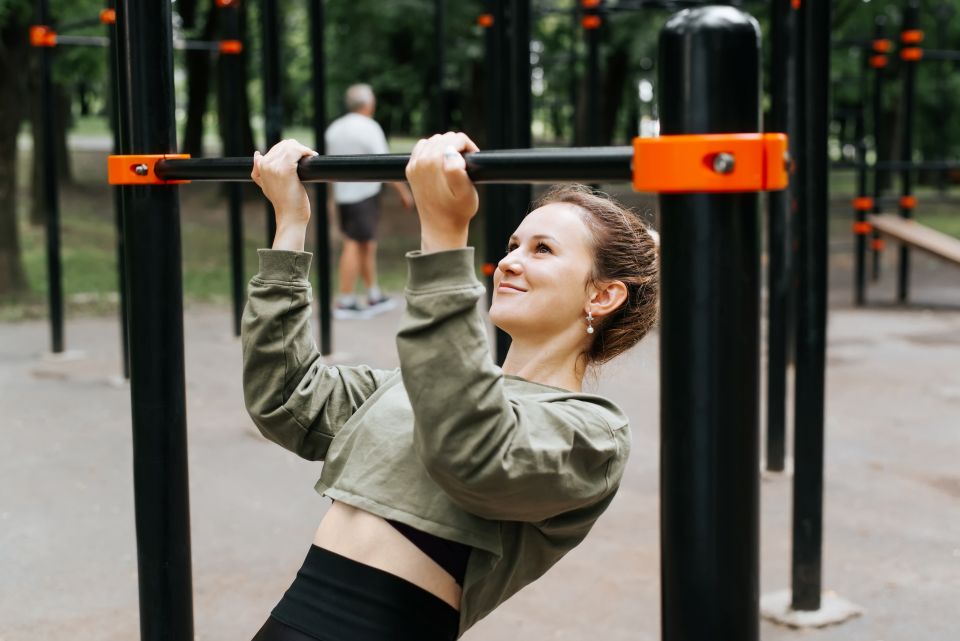
Assisted Chinups
- Pullup Bar | Gymnastic Rings

Chinup Negatives
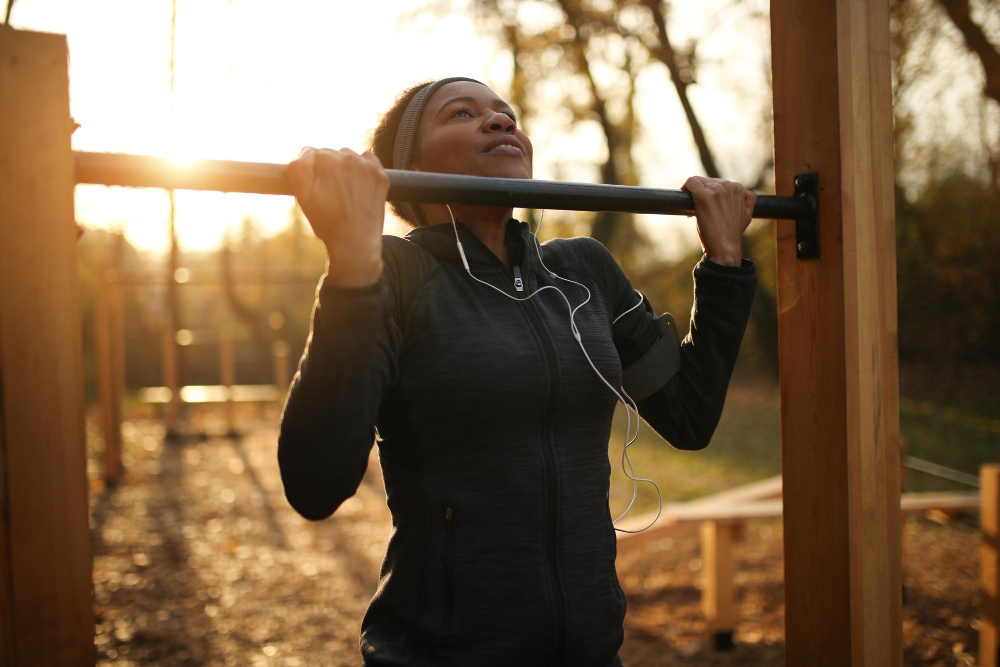
Chinups

Churn the Pot
Clamshells
Clock Squats
Closed/Open/Flat
Visual Skills - Laterality and Directionality
Closed/Open/Flat
- Tap/bump your hands according to the figures
- Circle: Closed fists bump the table
- Vertical line: Open hands with palms facing each other strikes the table.
- Horizontal line: Flat hands tap the table.

Clutch Flags
The Grip

Single-Leg Diagonal Flag

Bent-Knee Diagonal Flag

Full Diagonal Flag

Tuck Clutch Flag

Single-Leg Clutch Flag

Bent-Knee Clutch Flag

Clutch Flags

Cobra Stretches
Cold Therapy
Color Saccades
Visual Skills - Eye Movement Control, Visual Spatial Memory, Visual Sequential Memory
Color Saccades / Very Easy
- Color the pictures at the top and bottom rather than saying the corresponding color.
- Hang the chart at eye level, about 6' from where you will stand. The top row of the chart or the optional separate "decoding" chart is the answer key for the rest of the chart. To read the chart, find the matching picture on the decoding row or chart and say the corresponding color.

Color Saccades / Easy
- Color the pictures at the bottom rather than saying the corresponding color.
- Hang the chart at eye level, about 6' from where you will stand. The top row of the chart or the optional separate "decoding" chart is the answer key for the rest of the chart. To read the chart, find the matching picture on the decoding row or chart and say the corresponding color.

Color Saccades
- Hang the chart at eye level, about 6' from where you will stand. The top row of the chart or the optional separate "decoding" chart is the answer key for the rest of the chart. To read the chart, find the matching picture on the decoding row or chart and say the corresponding color.

Color Saccades / Hard
- Cut off the top of the chart and hold it in your hand. Hang the bottom portion of the chart at eye level, about 6' from where you are standing.
- Hang the chart at eye level, about 6' from where you will stand. The top row of the chart or the optional separate "decoding" chart is the answer key for the rest of the chart. To read the chart, find the matching picture on the decoding row or chart and say the corresponding color.

Commando Pullups
Assisted Commando Pullups
- Pullup Bar | Gymnastic Rings

Commando Pullups

Compass Stretch
Computer Saccades
Visual Skills - Eye Movement Control, Visual Spatial Memory
Computer Saccades L1

Computer Saccades L2

Control Balance
Notes - Pilaties move
⚠ Assisted Control Balance

⚠ Control Balance

⚠ Advanced Control Balance

Core Brace
Cossack Squats
Notes - alt: Side Lunge Stretches; Side-to-Side Lunges.
Assisted Cossack Squats

Cossack Squats

Low Cossack Squats

Cow Face Arms Stretch
Notes - alt: Gomukhasana.
Cow Face Legs Stretch
Notes - alt: Gomukhasana. Stretches the Piriformis and other Hip Exernal Rotators—which are deep Gluteal muscle. Does not stretch the Hip Adductors or Hip Flexors.
Cow Face Stretch
Notes - aka: Gomukhasana. Stretches the Piriformis and other Hip Exernal Rotators—which are deep Gluteal muscle. Does not stretch the Hip Adductors or Hip Flexors.
Cow Face Stretch w/ Eagle Arms
Notes - alt: Gomukhasana. Stretches the Piriformis and other Hip Exernal Rotators—which are deep Gluteal muscle. Does not stretch the Hip Adductors or Hip Flexors.
Crab March
Notes - alt: Reverse Tabletop.
Crab Pumps
Notes - alt: Reverse Tabletop.
Crab Reach
Notes - alt: Reverse Tabletop.
Crab Walks
Notes - alt: Reverse Tabletop.
Cradle Stretch
Crane Stretch
Notes - Not the same as Crow, the arms are straight here.
Crane Stretch

Crocodile
Notes - aka. Crocodile Pose
Cross-Arm Stretch
Crossover Step Ups
⚠ Crossover Step Ups

Crow Stretch
Notes - Not the same as Crane, the arms are bent here. Using Ragdoll as prerequisite and not Forward Fold because the knees are bent.
Curtsy Lunges
Curtsy Squats
Dancer Stretches
Notes - Standing bow opens the body out to the side, the torso comes forward as part of the pose. Eventually working toward a split. Dancer maintains square hips, and the torso coming forward is largely in part due to the backbend & lifting action in the back leg, as opposed to leaning forward while you happen to be reaching back for the back leg. Standing bow, arm and torso parallel to the floor. Dancers, arm and torso at a much higher angle - some cue it as hand to the top of the wall.
Dead Bug Internal Rotation
Dead Bugs
Dead Bugs w/ Overhead Reachs
Pullover Dead Bug

Dead Hangs
Notes - aka. Passive Hang. Pronated and supinated grips work slightly different muscles.
Pronated Grip Dead Hang

Supinated Grip Dead Hang

Dead-Stop Pushups
Dead-Stop Pushups

Deadlift
Deadlift

Deep Cervical Extensor Strengthening (Quadruped)
Cervical Skills - Cervical Extension
Notes - aka. Deep Neck Extensor Strengthening
Deep Cervical Extensor Strengthening (Standing)
Cervical Skills - Cervical Extension
Notes - aka. Deep Neck Extensor Strengthening
Deep Cervical Extensor Strengthening (Supine)
Cervical Skills - Cervical Extension
Notes - aka. Deep Neck Extensor Strengthening
Deep Cervical Flexor Activation
Cervical Skills - Cervical Flexion
Notes - aka. Deep Neck Flexor Activation
Deep Cervical Flexor/Extensor Strengthening (Standing)
Cervical Skills - Cervical Flexion, Cervical Extension
Notes - aka. Deep Neck Flexor/Extensor Strengthening
Deep Squats
Notes - aka: Garland Pose; Malasana.
Assisted Deep Squat Hold

⚠ Assisted Deep Squats

Deep Squat Hold

⚠ Deep Squats

Deep Squats + Foward Fold
Notes - aka: Garland Pose; Malasana.
Deep Squats + Thoracic Rotation
Thoracic Skills - Thoracic Rotation
Notes - aka: Garland Pose; Malasana.
Deep Squat w/ Thoracic Rotation

Revolved Deep Squat Hold

Revolved Deep Squat Hold w/ Knees Together

Depth Drops
Notes - No prerequisites because the height can be adjusted to as little as 1-inch.
⚠ Depth Drops

⚠ One-Leg Depth Drops

Devotional Warrior
Notes - aka. Humble Warrior
Devotional Warrior

Diagastrics Muscle Release
Cervical Skills - Cervical Tension
Diagonals
Banded Diagonals

Diaphragmatic Breathing
Diaphragmatic Stretching
Dips
Notes - When you descend into a triceps dip, using poor form, it also increases the risk of shoulder impingement. Impingement is a condition where the ligaments, tendons, and bursa that run underneath the acromion, the bony prominence on the shoulder blade, become compressed. The end result is inflammation and discomfort, especially when you do dips or when you lift your arms up. That’s why form is so critical when you dip.
⚠ Jackknife Parallel Dips

⚠ Assisted Parallel Dips

⚠ Parallel Dips

Directionality Arrows
Visual Skills - Laterality and Directionality, Visual Spatial Relations, Visual Spatial Orientation
Notes - aka. Arrow Chart
Directionality Arrows
- Hang the arrow chart at eye-level.
- Stand in a balanced posture.
- Say the same, do the same
- Call out the direction of each arrow while AT THE SAME TIME moving both arms in the same direction of each arrow. It is important that you extend your arms fully and move them in a full, fluid motion. Rotate your wrists so that both palms are facing the direction of movement.
- The goal is to coordinate your verbal response with your arm movement so that they occur simultaneously.
- Add a metronome beat.
- Coordinate what you say and the direction you move your arms with the beat of the metronome.
- Say and do the opposite.
- Say the opposite direction the arrow is pointing, and to move your arms in the opposite direction while using the metronome.
- Say the opposite, do the same.
- Move your hands in the same direction as the arrow, but call out the opposite direction
- Say the same, do the opposite.
- Say the same direction as the arrow, but move your arms in the opposite direction
- Diagonal Arrows
- Repeat the above levels using the diagonal arrow chart.
- Directionality refers to the position and spatial properties of other people and objects in relation to you. When well-integrated, directionality provides stability and constancy for your understanding of the external world.

Dolphin
One-Leg Dolphin Stretch

Dolphin + Plank
Forearm Plank to One-Leg Dolphin

Doorway Stretches
Dots Card
Visual Skills - Convergence, Divergence
Dove Stretch
Downward Dog
Modified Downward Dog

Downward Dog

Single Leg Downward Dog

Downward Dog (Revolved)
Revolved Downward Dog

Downward Dog + Plank
Plank to One-Leg Downward Dog

Downward Dog + Quad Stretch
Single Leg Downward Dog w/ Quad Stretch

Downward Dog + Upward Dog
Notes - aka: Downward Facing Dog + Upward Facing Dog.
Downward Dog to Upward Dog

Downward Dog Alternating Toe Touches
Downward Dog Alternating Toe Touches

Downward Dog Knee to Elbow
One-Leg Downward Dog Knee to Elbow

One-Leg Downward Dog Knee to Opposite Elbow

Downward Dog to Pigeon Stretches
One-Leg Downward Dog to Pigeon

Dragonfly Hold
Notes - aka. Grasshopper Stretch
Baby Dragonfly Hold

Dragonfly Hold

Dynamic Hamstring Stretches
Notes - These are dynamic stretches.
Walking Hamstring Stretch

Eagle Arms Stretch
Notes - rel: Eagle Stretch; Eagle Legs Stretch.
Eagle Legs Stretch
Notes - rel: Eagle Stretch; Eagle Arms Stretch. Not using Chair Stretch as a prerequisite because of the Seated Eagle Legs Stretch variation.
Eagle Stretch
Notes - rel: Eagle Arms Stretch; Eagle Legs Stretch. Not using Chair Stretch as a prerequisite because of the Seated Eagle Stretch variation.
Ear Pressure Stretch
Easy Stretches
Notes - aka: Sukhasana; Criss Cross Applesauce.
Easy Stretch w/ Forward Fold

Easy Stretch w/ Side Bend

EFT Tapping
Eight-Limbed Stretch
Elbow Levers
Elbow Wall Slides
Thoracic Skills - Thoracic Extension
Elbow Wall Slides

Elephant Trunk Hold
Notes - aka. Titibasana; Insect Stretch
Bound Elephant Trunk Stretch

Elevated Frog Pumps
Elevated Frog Pump Hold

Elevated Frog Pumps

Elevated Split Squats
Assisted Bulgarian Split Squats

Bulgarian Split Squats

Foot-Elevated Bulgarian Split Squats

Eye Blinking
Eye Compress
Eye of the Needle Stretch
Notes - aka: Supine Figure 4 Stretch. Stretches the Piriformis and other Hip Exernal Rotators—which are deep Gluteal muscle. Does not stretch the Hip Adductors or Hip Flexors.
Eye Pushups (Accommodation)
Visual Skills - Focus Accommodation
Notes - We just want to work accommodation and not convergence so this is best doing one eye at a time.
Eye Pushups (Convergence)
Visual Skills - Convergence, Divergence
Notes - We want to focus on convergence so these should work both eyes at once.
Eye Relaxation
Face Pulls
Face Pulls

Fallen Star Stretches
Notes - alt: Wild Thing. aka: Fallen Triangle.
Falling
How to Fall Forwards Safely

How to Fall Safely

Farmer's Carries
Two-Hand Farmer's Carry

One-Hand Farmer's Carry

Fast Feet
Figure 4 Stretch
Notes - Stretches the Piriformis and other Hip Exernal Rotators—which are deep Gluteal muscle. Does not stretch the Hip Adductors or Hip Flexors.
Standing Figure 4 Stretch

Finger Abduction
Finger Adduction
Finger Ball Squeezes
Finger Curls
Finger Extensions
Notes - aka. Finger Spreads
Finger Mobility
Finger Tendon Glides
Firefly Hold
Notes - aka. Titibasana; Insect Stretch
One-Leg Firefly Hold

Firelog Stretch
Notes - aka. Double Pigeon.
Fish
Flipper Accommodation
Visual Skills - Eye Movement Control, Eye Teaming, Focus Accommodation
Notes - aka. Accommodative Facility. Uses refractive lens for accommodation (focus).
Monocular Flipper Accommodation
- Sit at a table with adequate lighting. Use a book with small print or a sheet of scrambled letters. Reading material should be at a slant ~16" from eyes.
- Patch each eye. Read one line of scrambled letters with each eye.
- Look through one set of lenses on the flipper and focus on the reading material until it is clear. Once it is clear, read or spell aloud three words.
- Flip the lens over and focus until the words are clear, then read aloud the next three words. Continue the cycle.
- Do not move your head or neck closer or farther from the reading material in order to clear the lens.
- Observe how quickly you can clear each lens. Look for signs of fatigue.
- Is one eye easier than the other?
- Is one lens easier than the other?
- As less effort is needed to clear each lens and keep your place, increase the number of lines you read with each eye.

Binocular Flipper Accommodation
- Sit at a table with adequate lighting. Use a book with small print or a sheet of scrambled letters. Reading material should be at a slant ~16" from eyes.
- Place supression check (red/green or polaroid stripes) over reading material. Use both eyes, but wear polaroid or red/green glasses.
- Look through one set of lenses on the flipper and focus on the reading material until it is clear. Once it is clear, read or spell aloud three words.
- Flip the lens over and focus until the words are clear, then read aloud the next three words. Continue the cycle.
- Alternate stripes may appear black if your eyes are not working together. If this happens, tap the letters you are trying to read or blink.
- Do not move your head or neck closer or farther from the reading material in order to clear the lens.
- Observe how quickly you can clear each lens. Look for signs of fatigue.
- Is one eye easier than the other?
- Is one lens easier than the other?
- As less effort is needed to clear each lens and keep your place, increase the number of lines you read with each eye.

Flipper Vergence
Visual Skills - Convergence, Divergence
Notes - Uses prism lens for vergence.
Flower Pressing
Flutter Kicks
Flyes
Chest Fly
- Flat Bench

Flying Crow Stretch
Notes - Not the same as Crane, the arms are bent here.
Flying Horse Stretch
Flying Horse Stretch w/ Eagle Arms
Flying Lizard Stretch
Flying Lizard Stretch

Flying Splits
Notes - aka. Hurdler Pose
Foot Doming
Foot Smash
Foot-Elevated Lateral Squats
Assisted Foot-Elevated Lateral Squats

Foot-Elevated Lateral Squats

Forearm Balance Front Splits
Forearm Balance Side Splits
Forearm Balances
Forearm Copenhagen Planks
Forearm Copenhagen Planks + Leg Lifts
Forearm Headstand Front Splits
⚠ Forearm Headstand Front Splits

Forearm Headstand Side Splits
⚠ Forearm Headstand Side Splits

Forearm Headstands
Forearm Plank Thread the Needle
Notes - aka. Forearm Plank with Reach Through
Forearm Planks
Notes - aka: Low Planks
Forearm Planks + Arm Reach
Forearm Planks + Leg Reach
Forearm Scapular Pushups
Forearm Scapular Pushups

Forearm Scorpions
Forearm Side Plank Clamshells
Forearm Side Planks
Forearm Side Plank Kickstand

Forearm Side Staggered Plank
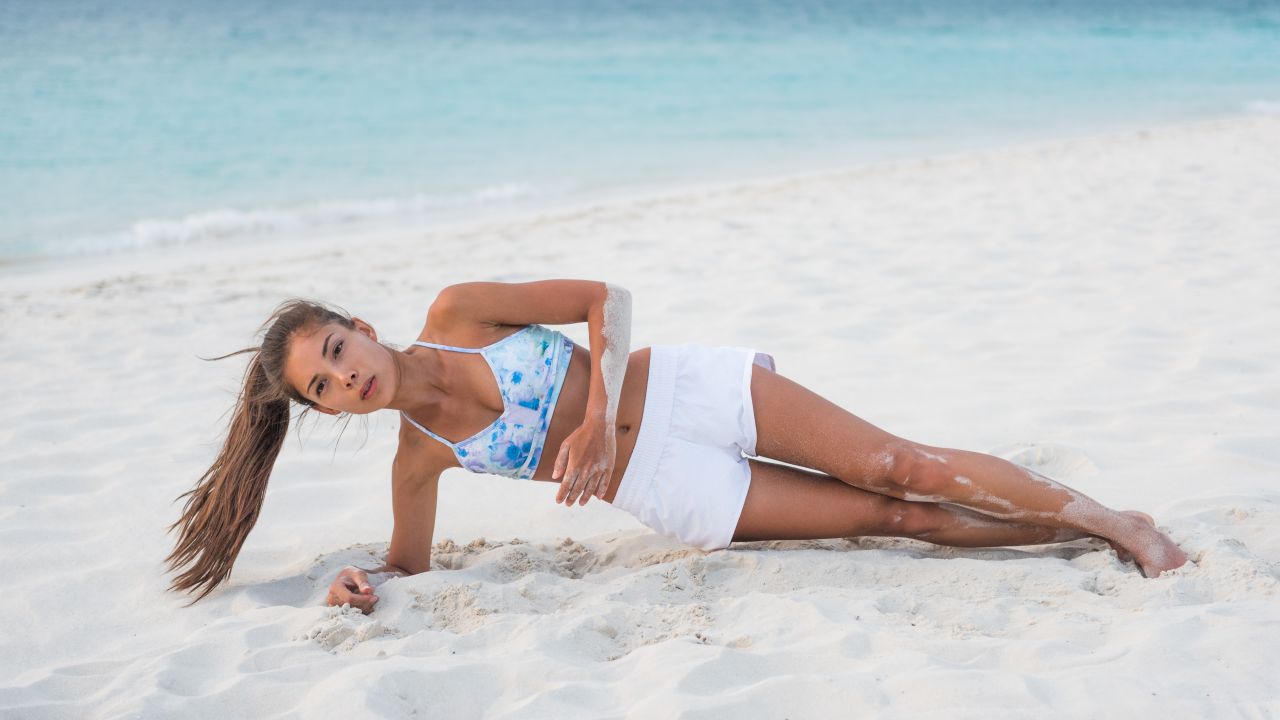
Forearm Side Planks w/ Hip Lifts
Forearm Side Plank w/ Hip Lifts

Forearm Side Planks w/ Torso Rotations
Forearm Side Plank w/ Torso Rotation

Forearm Side Star Planks
Forearm Side Star Knee Balance

Forearm Side Plank w/ Leg Lifts

Forearm Side Plank w/ Toe Hold

Free Space Fusion Card
Visual Skills - Eye Teaming, Convergence, Divergence, Focus Accommodation, Depth Perception
Notes - aka. Lifesaver or Sports Fusion Card
Free Space Fusion Card: Convergence
- Opaque Card: Converging (Base-out).
- Hold the card at arm's length; place the tip of your red pointer stick flat and midway between the two circles.
- Slowly move the red pointer toward you and be aware of what is happening to the circles in the background. Each of the targets will "wiggle" apart so that you briefly have four circles instead of two. As you continue to move the pointer toward your eyes, the middle circles will slide together to form one new circle. Stop! Move the pointer away. Can you still see the middle circle? If so, don't use the pointer for the remaining steps; if not, use it.
- You now have three circles, two blurry ones off to the sides, and one clearer circle in the center. If the center circle is not clear, move the card slightly in or out slowly until you find a point where it is clear.
- Take note of details; notice the relative depth of each of the three circles in the row. You should notice that one of the circles is closer to you than the other two circles. Try to keep both colors present in the middle circle. If it is green, you are favoring your left eye; if it is red, you are favoring your right eye.
- Trombone the circles. Slowly pull the target closer to you, keeping it clear. When it blurs, move it further away until it is clear. Repeat the procedure of pulling it as close to your eyes and as far from your eyes as you can. Trombone in and out 5 times each.
- Now move the target in a circular arc. Follow the target around clockwise, then counterclockwise. Be aware of the depth clue of the middle circle and keep the words clear.
- Repeat the prior steps with the next 3 rows. Make sure you notice depth in the details, sometimes in whole words, sometimes in individual letters. Where is the ball positioned?
- When you can accomplish each of the rows, jump from one to the other so that you can make fast changes.
- Pay attention to the clues that tell you when you are not using both eyes together. If the green color fades, you are tuning out the left eye; if the red color fades you are tuning out the right eye. Do you see a short vertical line both above and below the centered ball on the sports fixation card? Can you see each letter on the lifesaver card?
- When you look ahead of the card, you will feel like you are pulling your eyes inward or crossing them. When you look through the target, you should feel like you are "spacing out" or "phasing through" the target. It's like the feeling you get when someone is talking to you, but your mind is elsewhere.
- Be aware of what is surrounding the card; do not sacrifice periphery for the sake of central detail.
- When you look through the target, you will find it easier if you relax & breathe.
- When you get good at looking both near and far, try alternating between the two.
- It's better to do it once or twice thinking about what you see and feel, than five times fast.

Free Space Fusion Card: Divergence
- Transparent Card: Diverging (Base-in).
- Hold the card at arm's length; place the tip of your red pointer stick flat and midway between the two circles.
- Slowly move the red pointer toward you and be aware of what is happening to the circles in the background. Each of the targets will "wiggle" apart so that you briefly have four circles instead of two. As you continue to move the pointer toward your eyes, the middle circles will slide together to form one new circle. Stop! Move the pointer away. Can you still see the middle circle? If so, don't use the pointer for the remaining steps; if not, use it.
- You now have three circles, two blurry ones off to the sides, and one clearer circle in the center. If the center circle is not clear, move the card slightly in or out slowly until you find a point where it is clear.
- Take note of details; notice the relative depth of each of the three circles in the row. You should notice that one of the circles is closer to you than the other two circles. Try to keep both colors present in the middle circle. If it is green, you are favoring your left eye; if it is red, you are favoring your right eye.
- Trombone the circles. Slowly pull the target closer to you, keeping it clear. When it blurs, move it further away until it is clear. Repeat the procedure of pulling it as close to your eyes and as far from your eyes as you can. Trombone in and out 5 times each.
- Now move the target in a circular arc. Follow the target around clockwise, then counterclockwise. Be aware of the depth clue of the middle circle and keep the words clear.
- Repeat the prior steps with the next 3 rows. Make sure you notice depth in the details, sometimes in whole words, sometimes in individual letters. Where is the ball positioned?
- When you can accomplish each of the rows, jump from one to the other so that you can make fast changes.
- Repeat the prior steps while looking through (beyond) the target. A good background is a smooth, lightly painted wall. All of the depth effects of the letters, words, and other details are now reversed.
- Pay attention to the clues that tell you when you are not using both eyes together. If the green color fades, you are tuning out the left eye; if the red color fades you are tuning out the right eye. Do you see a short vertical line both above and below the centered ball on the sports fixation card? Can you see each letter on the lifesaver card?
- When you look ahead of the card, you will feel like you are pulling your eyes inward or crossing them. When you look through the target, you should feel like you are "spacing out" or "phasing through" the target. It's like the feeling you get when someone is talking to you, but your mind is elsewhere.
- Be aware of what is surrounding the card; do not sacrifice periphery for the sake of central detail.
- When you look through the target, you will find it easier if you relax & breathe.
- When you get good at looking both near and far, try alternating between the two.
- It's better to do it once or twice thinking about what you see and feel, than five times fast.

Free Space Fusion Card
- Opaque Card: Converging (Base-out).
- Hold the card at arm's length; place the tip of your red pointer stick flat and midway between the two circles.
- Slowly move the red pointer toward you and be aware of what is happening to the circles in the background. Each of the targets will "wiggle" apart so that you briefly have four circles instead of two. As you continue to move the pointer toward your eyes, the middle circles will slide together to form one new circle. Stop! Move the pointer away. Can you still see the middle circle? If so, don't use the pointer for the remaining steps; if not, use it.
- You now have three circles, two blurry ones off to the sides, and one clearer circle in the center. If the center circle is not clear, move the card slightly in or out slowly until you find a point where it is clear.
- Take note of details; notice the relative depth of each of the three circles in the row. You should notice that one of the circles is closer to you than the other two circles. Try to keep both colors present in the middle circle. If it is green, you are favoring your left eye; if it is red, you are favoring your right eye.
- Trombone the circles. Slowly pull the target closer to you, keeping it clear. When it blurs, move it further away until it is clear. Repeat the procedure of pulling it as close to your eyes and as far from your eyes as you can. Trombone in and out 5 times each.
- Now move the target in a circular arc. Follow the target around clockwise, then counterclockwise. Be aware of the depth clue of the middle circle and keep the words clear.
- Repeat the prior steps with the next 3 rows. Make sure you notice depth in the details, sometimes in whole words, sometimes in individual letters. Where is the ball positioned?
- When you can accomplish each of the rows, jump from one to the other so that you can make fast changes.
- Transparent Card: Diverging (Base-in).
- Repeat the prior steps while looking through (beyond) the target. A good background is a smooth, lightly painted wall. All of the depth effects of the letters, words, and other details are now reversed.
- Alternate base-in (diverging) to base-out (converging) for each row before moving on to the next.
- Pay attention to the clues that tell you when you are not using both eyes together. If the green color fades, you are tuning out the left eye; if the red color fades you are tuning out the right eye. Do you see a short vertical line both above and below the centered ball on the sports fixation card? Can you see each letter on the lifesaver card?
- When you look ahead of the card, you will feel like you are pulling your eyes inward or crossing them. When you look through the target, you should feel like you are "spacing out" or "phasing through" the target. It's like the feeling you get when someone is talking to you, but your mind is elsewhere.
- Be aware of what is surrounding the card; do not sacrifice periphery for the sake of central detail.
- When you look through the target, you will find it easier if you relax & breathe.
- When you get good at looking both near and far, try alternating between the two.
- It's better to do it once or twice thinking about what you see and feel, than five times fast.

Free Space Fusion Card: BIM/BOP
- Use a clear/transparent fusion card.
- Hold the card at arm's length; place the tip of your red pointer stick flat and midway between the two circles.
- Slowly move the red pointer toward you and be aware of what is happening to the circles in the background. Each of the targets will "wiggle" apart so that you briefly have four circles instead of two. As you continue to move the pointer toward your eyes, the middle circles will slide together to form one new circle. Stop! Move the pointer away. Can you still see the middle circle? If so, don't use the pointer for the remaining steps; if not, use it.
- You now have three circles, two blurry ones off to the sides, and one clearer circle in the center. If the center circle is not clear, move the card slightly in or out slowly until you find a point where it is clear.
- Take note of details; notice the relative depth of each of the three circles in the row. You should notice that one of the circles is closer to you than the other two circles. Try to keep both colors present in the middle circle. If it is green, you are favoring your left eye; if it is red, you are favoring your right eye.
- Repeat the prior steps with the next 3 rows. Make sure you notice depth in the details, sometimes in whole words, sometimes in individual letters. Where is the ball positioned?
- When you can accomplish each of the rows, jump from one to the other so that you can make fast changes.
- Repeat the prior steps while looking through (beyond) the target. A good background is a smooth, lightly painted wall. All of the depth effects of the letters, words, and other details are now reversed.
- Alternate base-in (diverging) to base-out (converging) for each row before moving on to the next.
- Pay attention to the clues that tell you when you are not using both eyes together. If the green color fades, you are tuning out the left eye; if the red color fades you are tuning out the right eye. Do you see a short vertical line both above and below the centered ball on the sports fixation card? Can you see each letter on the lifesaver card?
- When you look ahead of the card, you will feel like you are pulling your eyes inward or crossing them. When you look through the target, you should feel like you are "spacing out" or "phasing through" the target. It's like the feeling you get when someone is talking to you, but your mind is elsewhere.
- Be aware of what is surrounding the card; do not sacrifice periphery for the sake of central detail.
- When you look through the target, you will find it easier if you relax & breathe.
- When you get good at looking both near and far, try alternating between the two.
- It's better to do it once or twice thinking about what you see and feel, than five times fast.

Free Space Perception
Visual Skills - Laterality and Directionality, Visual Spatial Relations, Visual Spatial Orientation
Frog Pump Hip Thrusts
Frog Pump Hip Thrust Hold

Frog Pump Hip Thrusts

Frog Pumps
Frog Pump Hold

Frog Stretch (Bhekasana)
Frog Stretch (Mandukasana)
Front Raises
Notes - aka. Shoulder Flexion. You use your front shoulders a lot every time you bench or press, so front raises are not as necessary for even development.
Front Raise

Front Reverse Lunges
Assisted Reverse Lunge

Reverse Lunge

Front Single Leg Raises
Notes - aka: Front Single Leg Lifts.
Front Splits
Notes - aka. Monkey Stretch
Front Squats
Front Squats

Front Standing Hand to Big Toe Stretches
⚠ Standing Hand to Big Toe Stretch

⚠ Standing Foot to Head Stretch

Gardening
Gas Pedals
Notes - This is a rehabilitation exercise.
Gate Stretch
Glute Bridge + Adductor Squeeze
One-Leg Glute Bridge w/ Adductor Squeeze

Glute Bridge + Reach
Glute Bridge w/ Reach

Glute Bridge March
Glute Bridges
Glute Medius Wall Activations
Notes - aka: Glute Medius Wall Contractions
Goblet Squats
Goblet Squats

Good Mornings
Gorilla Rows
⚠ Alternating Gorilla Rows

⚠ Gorilla Rows

Granny Toss
Gravity Press
Hack Squats
Hacky-Sack
Half Moon Stretches
Notes - aka: Ardha Chandrasana.
Half-Lotus Toe Balance Stretches
Notes - aka: Half-Lotus Toe Stands. Stretches the Piriformis and other Hip Exernal Rotators—which are deep Gluteal muscle. Does not stretch the Hip Adductors or Hip Flexors.
Hammer Curls
Hamstring Bridge Marches
Hamstring Bridges
Hamstring Catches
Hamstring Floss
Notes - These are dynamic stretches.
Hamstring Scoops
Notes - These are dynamic stretches.
Hamstring Walk Outs
Notes - These are dynamic stretches.
Hand Plank Thread the Needle
Notes - aka Hand Plank with Reach Through
Hand Plank Thread the Needle

Hand Plank to Pike
Hand Plank to Pike Jumps
Hand Plank to Pike Walks
Hand Planks
Notes - aka: High Planks
Hand Planks + Arm Reach
Hand Planks + Leg Reach
Hand Reverse Planks
Hand Scapular Pushups
Hand Scapular Pushups

Hand Side Planks
Hand Side Planks w/ Hip Lifts
Hand Side Plank w/ Hip Lifts

Hand Side Star Planks
Hand Side Plank w/ Leg Lifts

Hands Clasped Behind Back
Handstand Front Splits
Handstand Front Splits

Handstand Pushups
⚠ Wall Handstand Pushups

Handstand Scorpions
Handstand Side Splits
Wall Handstand Side Splits

Handstand Side Splits

Handstands
Wall Handstand

Half Handstand

Handstand

Hangboarding
Hangboarding

Hanging Leg Raises
Hanging Knee Raises

Hanging Leg Raises

Hanging Oblique Raises

Toe to Bars

Happy Baby Stretch
⚠ One-Leg Happy Baby Stretch

⚠ Happy Baby Stretch

Hart Chart
Visual Skills - Eye Movement Control, Visual Spatial Memory, Visual Sequential Memory
Hart Chart
- Place the chart on the wall at eye level in a well-lit area. Stand 6-8' back from the chart.
- Read the first and last letter of each line, beginning with the top line. You should read letters as quickly as possible, moving just your eyes. if there is head movement, put a beanbag on your head to make sure you are aware of what your head is doing.
- Read the second and next to last letter of each line, beginning with the top line, reading down.
- Read the third letters from the beginning and end of each line.
- Read the fourth letters from beginning and end of each line, then read the middle two columns.
- Read diagonally. Read the first letter in the column 1 (top left), then the last letter in column 10 (bottom right). Continue reading the letters in column 1 from top to bottom, alternating with the letters in column 10 read from bottom to top. Continue this pattern until the chart is completed.

Hart Chart w/ Cross Crawl
- Place the chart on the wall at eye level in a well-lit area. Stand 6-8' back from the chart.
- Read the first and last letter of each line, beginning with the top line. You should read letters as quickly as possible, moving just your eyes. if there is head movement, put a beanbag on your head to make sure you are aware of what your head is doing.
- Read the second and next to last letter of each line, beginning with the top line, reading down.
- Read the third letters from the beginning and end of each line.
- Read the fourth letters from beginning and end of each line, then read the middle two columns.
- Read diagonally. Read the first letter in the column 1 (top left), then the last letter in column 10 (bottom right). Continue reading the letters in column 1 from top to bottom, alternating with the letters in column 10 read from bottom to top. Continue this pattern until the chart is completed.

Hart Chart w/ Cross Crawl March
- Place the chart on the wall at eye level in a well-lit area. Stand 6-8' back from the chart.
- Read the first and last letter of each line, beginning with the top line. You should read letters as quickly as possible, moving just your eyes. if there is head movement, put a beanbag on your head to make sure you are aware of what your head is doing.
- Read the second and next to last letter of each line, beginning with the top line, reading down.
- Read the third letters from the beginning and end of each line.
- Read the fourth letters from beginning and end of each line, then read the middle two columns.
- Read diagonally. Read the first letter in the column 1 (top left), then the last letter in column 10 (bottom right). Continue reading the letters in column 1 from top to bottom, alternating with the letters in column 10 read from bottom to top. Continue this pattern until the chart is completed.

Hart Chart w/ Infinity Circles
- Place the chart on the wall at eye level in a well-lit area. Stand 6-8' back from the chart.
- Read the first and last letter of each line, beginning with the top line. You should read letters as quickly as possible, moving just your eyes. if there is head movement, put a beanbag on your head to make sure you are aware of what your head is doing.
- Read the second and next to last letter of each line, beginning with the top line, reading down.
- Read the third letters from the beginning and end of each line.
- Read the fourth letters from beginning and end of each line, then read the middle two columns.
- Read diagonally. Read the first letter in the column 1 (top left), then the last letter in column 10 (bottom right). Continue reading the letters in column 1 from top to bottom, alternating with the letters in column 10 read from bottom to top. Continue this pattern until the chart is completed.

Hart Chart w/ Metronome
- Place the chart on the wall at eye level in a well-lit area. Stand 6-8' back from the chart.
- Read the first and last letter of each line, beginning with the top line. You should read letters as quickly as possible, moving just your eyes. if there is head movement, put a beanbag on your head to make sure you are aware of what your head is doing.
- Read the second and next to last letter of each line, beginning with the top line, reading down.
- Read the third letters from the beginning and end of each line.
- Read the fourth letters from beginning and end of each line, then read the middle two columns.
- Read diagonally. Read the first letter in the column 1 (top left), then the last letter in column 10 (bottom right). Continue reading the letters in column 1 from top to bottom, alternating with the letters in column 10 read from bottom to top. Continue this pattern until the chart is completed.

Head-to-Knee Stretches
Notes - aka. One-Leg Seated Forward Folds
Heel Digs
Heel Elevated Wall Sits
Heel Elevated Single Leg Wall Sit

Heel Sits
Heel Walk
Notes - Ankle Plantar Flexion. Not a duplicate of Toe Raises b/c we want a seperate progression range for this.
Hero Fish Stretch
Notes - In Hero Pose, the feet are separated and the buttocks are on the floor, but in Thunderbolt Pose, the heels are together with the buttocks resting on top of them.
Hero Stretch
Notes - In Hero Pose, the feet are separated and the buttocks are on the floor, but in Thunderbolt Pose, the heels are together with the buttocks resting on top of them.
Heron Stretch
High Bicycle
Notes - Pilaties move
High Knees
High Knees

High Low Planks
High Lunge
Notes - In Warrior 1, your back heel is placed down on the floor and your toes are angled away from your body. In High Lunge, your back heel is lifted, and your toes face forward.
High Lunge Stretch

High Lunge w/ Eagle Arms
Notes - In Warrior 1, your back heel is placed down on the floor and your toes are angled away from your body. In High Lunge, your back heel is lifted, and your toes face forward.
High Lunge Stretch w/ Eagle Arms

Hip Airplanes
Quadruped Hip Airplane

Assisted Hip Airplane

Kickstand Hip Airplane

Hip Airplane

Hip External Rotation Pushups
Hip ER Pushups

Hip Hinges
⚠ Hip Hinge Cues

Hip Mobilizations
Notes - aka: Hip Distractions.
Quadruped Inferior-Posterior Hip Mobilization

Hip Rotations
Notes - aka: Hip Circles.
Walking Hip Rotations

Hip Shifts
Standing Offset Hip Shifts

Hip Thrusts
Hollow Body Hold
Bent-Knee Hollow Hold w/ Arms at Side

Hollow Hold w/ Arms at Side

Hopscotch Jumps
Horizontal Abduction
Horizontal Cohen Circle Chart
Visual Skills - Eye Teaming, Convergence, Divergence, Focus Accommodation
Horizontal Cohen Circle Chart L1
- Hang the Cohen circle chart with the stripe in the horizontal position at eye level on a window so you can look through it at objects in the distance. Wear red/green glasses with the red filter over your right eye.
- You'll need to do this during the day when it is light outside.
- Looking at the Cohen Chart, describe what you see:
- Where do you see the circle in relation to the black stripe?
- Is the circle stable or does it move around and change?
- Can you hold it still on the center of the stripe?
- Can you figure out how to change where the circle touches the stripe?
- Where does it feel like you need to look to put the circle: on the right side of the stripe? on the left side of the stripe? in the center of the stripe?
- Move the circle as far as you can to each side and hold it there for 3 seconds. Slowly bring it back to the center of the stripe. Move the circle halfway out on each side.
- Can you hold it there for 3 seconds, then slowly bring it back to center?
- Can you line up the circle so that its edge just rests on the outside edge of the stripe?
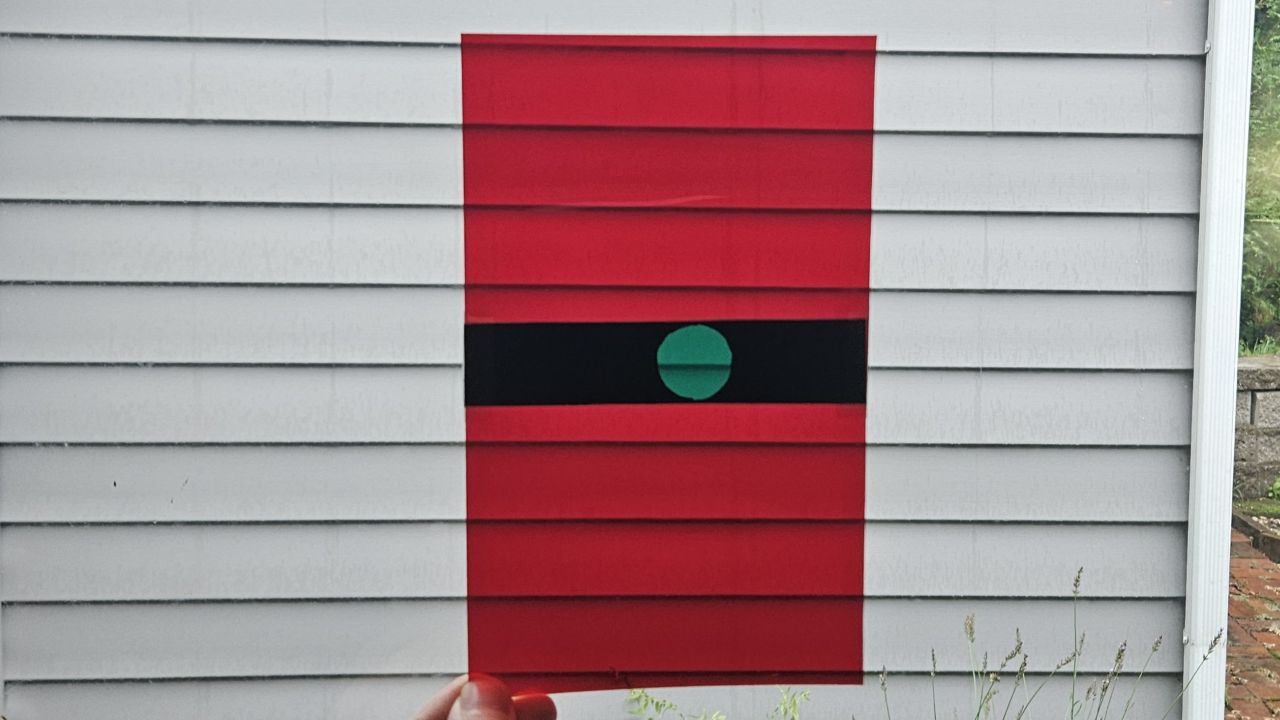
Horizontal Cohen Circle Chart L2
- Hang the Cohen circle chart with the stripe in the horizontal position at eye level on a window so you can look through it at objects in the distance. Wear red/green glasses with the red filter over your right eye.
- You'll need to do this during the day when it is light outside.
- Look at the chart and visually hold the circle still on the stripe. Place the prism in front of one eye. When the circle shifts position, using your eyes, move it back to the middle of the stripe again. Prism base-out: all distances, 12 inches to 12 feet. Prism base-in: closer distance, 12 inches to 3-6 feet, as possible.

Horse Stretch
Notes - aka. Goddess Stretch
Horse Stretch on Toes

Horse Stretch w/ Forward Fold
Notes - aka. Goddess Stretch
Horse Stretch w/ Forward Fold

Hot and Cold Therapy
Notes - aka. Contrast Baths
How to Properly Extend the Neck
Cervical Skills - Cervical Extension, Cervical Tension
Notes - , and how to identify faulty cervical movement
Hula Hoop
Humble Flamingo Stretches
Hundreds
Hurdle Hops
Hurdler Stretch
Inch Worms
Inch Worms

Inch Worms + Pushup
Inch Worms w/ Pushup

Information
Notes - aka. INFO.
⚠ INFO: Cervical Dysfunction

⚠ INFO: Forward Head Posture
- Work on Anterior Pelvic Tilt, Thoracic Extension, and Thoracic Dissociation.

⚠ INFO: Thoracic Outlet Syndrome

Inverted Staff Stretches
Jackknife
Notes - Pilaties move
JM Press
Jogging
Jump Rope
Jump Squats
Notes - aka. Squat Jumps
Jumping Jacks
Kahs and Gahs
Karaoke
Kegals
Kettlebell Swings
⚠ Two-Handed Kettlebell Swings

Kettlebell Windmill
Half-Kneeling Windmill

Standing Windmill

King Pigeon Stretches
Notes - alt: Mermaid Stretches. aka: Swan Stretch; Pigeon Stretch. Stretches the Piriformis and other Hip Exernal Rotators—which are deep Gluteal muscle. Does not stretch the Hip Adductors. Hip Flexors and Hamstrings are stretched by legs being spread apart.
Knee Extensions
Knee Lift & Glute Press
Knee Tucks
Kneeling Adductor Stretch
Kneeling Hip Flexor Stretch
Knees to Chest Stretch
L Sit
Notes - aka: Floating Stick Pose; Floating Staff Pose; Lifted Staff Pose.
Landmine Presses
Landmine Press
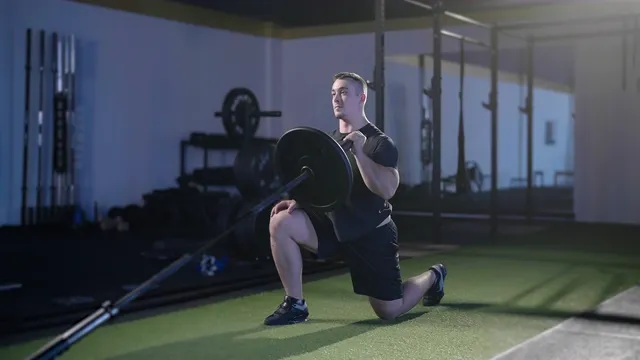
One-Arm Landmine Press

Landmine Rotations
Landmine Rows
Notes - aka: T-Bar Rows.
Landmine Rows
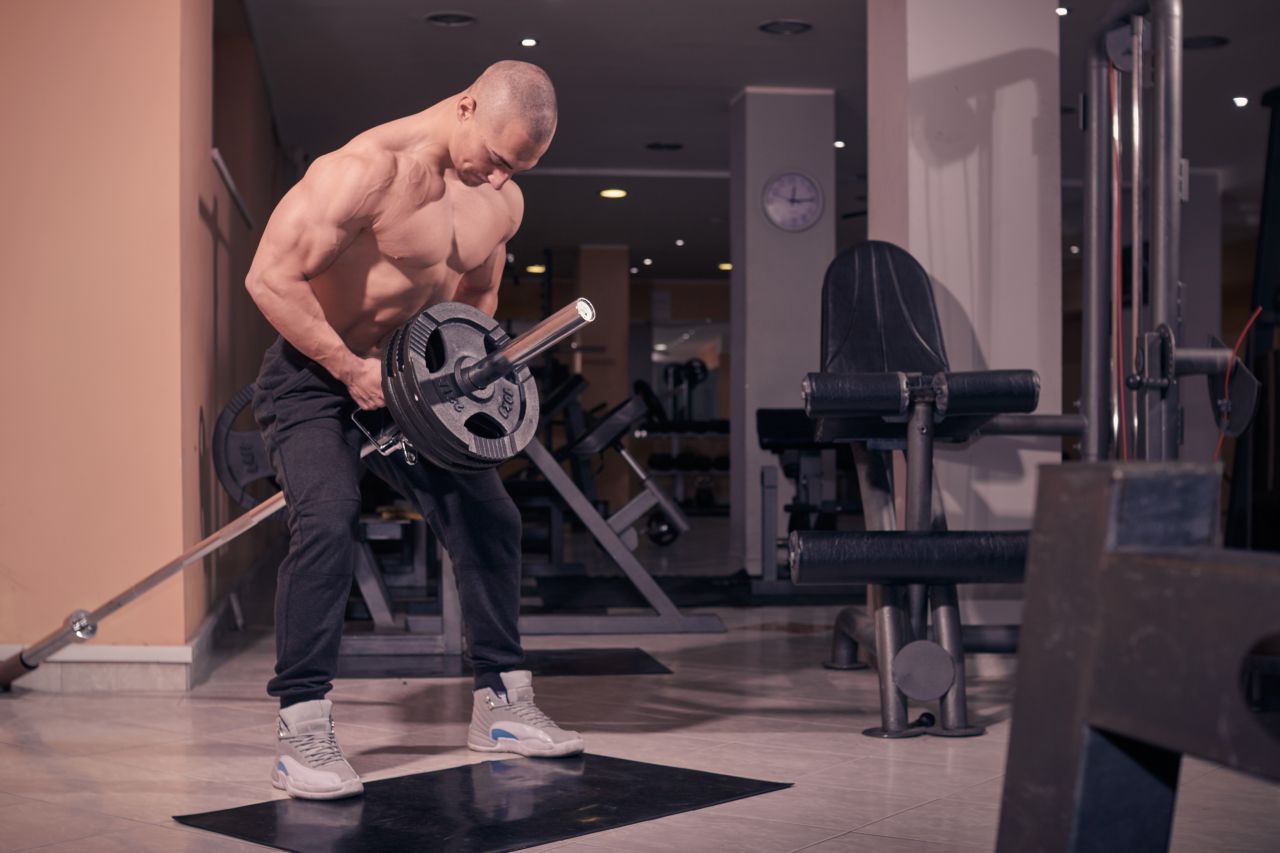
Laryngeal Massage
Lat Pulldowns
Lat Pulldowns

One-Arm Lat Pulldowns

Lat Stretches
Lateral Lunges
Assisted Lateral Lunges

Lateral Lunges

Lateral Lunges w/ Overhead Reachs
Lateral Lunges w/ Overhead Reach

Lateral Raises
Lateral Raise

Lateral Squat Walks
Lateral Squat Walks

Lateral Squats
Assisted Lateral Squats

Lateral Step Downs
Lateral Step Downs

Lateral Step Ups
Lateral Step Ups

Lateral Step Ups/Downs
Lateral Step Ups/Downs

Lazy 8s
Visual Skills - Eye Movement Control, Figure Ground
Leg Circles
Leg Cycle
Leg Lifts from Reverse Forearm Planks
Leg Lifts from Reverse Hand Planks
Leg Spreads
Lying Leg Spreads

Lying Leg Spread Knee Tucks

Leg Swings
Legs Up the Wall
Levator Scapulae: Mobility Tests
Cervical Skills - Cervical Tension
Levator Scapulae: Muscle Release
Cervical Skills - Cervical Tension
Levator Scapulae: Strengthening
Cervical Skills - Cervical Tension
Line Counting
Visual Skills - Eye Movement Control, Visual Spatial Memory
Lion Stretch
Lip Stretch
Lizard Stretch
Notes - aka. Dragon Stretch.
Bound Lizard Stretch

Loaded Beast
Notes - alt: Child's Stretch. Knees are kept elevated off of the ground.
Loaded Beast Kick Throughs
Loaded Beast to Kick Through
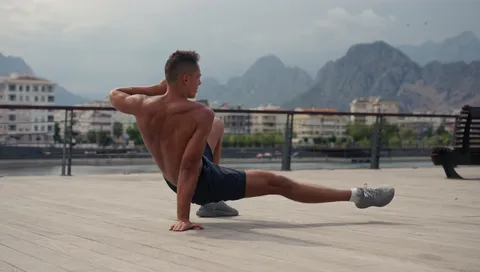
Lock Clams
Locust
Notes - Different from Superman in that the arms stay back instead of coming forward.
Longus Capitis Muscle Release
Cervical Skills - Cervical Tension
Longus Capitis Strengthening
Cervical Skills - Cervical Tension
Look, Ready, Touch, Back
Visual Skills - Eye Movement Control, Peripheral Vision, Gross-Motor, Fine-Motor
Notes - aka. Space Fixator
Look, Ready, Touch, Back: Hands
- Patch one eye, read chart; move patch to your other eye and repeat.
- Train each eye individually before training both eyes together.
- Stand about 16 inches away from chart. Look at the center target.
- Say Look - move your eyes to the top target (12:00 location).
- Say Ready - point the index finder of your dominant hand to your temple.
- Say Touch - touch the target you see.
- Say Back - return your hand to your side and look back at the center target.
- Repeat steps 1-5 looking at each target working in a clockwise direction.
- Work in the opposite direction.
- Use your non-dominant hand.
- Alternate hands with each target.
- Someone else says "Look, ready, touch, back" while you follow along.
- Only look at 12, 3, 6, and 9 o'clock position targets.
- Say and execute the steps in rhythm with a metronome set at 60 bpm.

Look, Ready, Touch, Back: Hands & Feet
- Patch one eye, read chart; move patch to your other eye and repeat.
- Train each eye individually before training both eyes together.
- Stand about 16 inches away from chart. Look at the center target.
- Say Look - move your eyes to the top target (12:00 location).
- Say Ready - point the index finder of your dominant hand to your temple.
- Say Touch - touch the target you see.
- Say Back - return your hand to your side and look back at the center target.
- Repeat steps 1-5 looking at each target working in a clockwise direction.
- Work in the opposite direction.
- Use your non-dominant hand.
- Alternate hands with each target.
- Someone else says "Look, ready, touch, back" while you follow along.
- Only look at the 12, 3, 6, and 9 o'clock position targets.
- Say and execute the steps in rhythm with a metronome set at 60 bpm.
- Add your feet in the following order:
- Point with your dominant hand and foot for the entire chart: hands and feet on the same side.
- Use your non-dominant hand and foot for the entire chart.
- Switch between your left and right sides at each target: hands and feet on the same side.
- Use your dominant hand and non-dominant foot for the whole chart: opposite hand and foot.
- Use your non-dominant hand and dominant foot for the whole chart: opposite hand and foot.
- Switch between your left and right sides at each target: opposite hand and foot.

Lotus + Head-to-Knee Stretches
Notes - aka. Seated Bound Forward Folds
Lotus Shoulder Stands
Notes - aka: Upward Lotus; Shoulder Stand with Lotus Legs; Urdhva Padmasana. Stretches the Piriformis and other Hip Exernal Rotators—which are deep Gluteal muscle. Does not stretch the Hip Adductors or Hip Flexors.
Lotus Stretches
Notes - Stretches the Piriformis and other Hip Exernal Rotators—which are deep Gluteal muscle. Does not stretch the Hip Adductors or Hip Flexors.
Lotus Stretches w/ Forward Folds
Notes - Stretches the Piriformis and other Hip Exernal Rotators—which are deep Gluteal muscle. Does not stretch the Hip Adductors or Hip Flexors.
Low Lunge Quad Stretches
Notes - aka. Horse Rider Pose; Equestrian Pose; Low Lunge
Low Lunge Quad Stretch

Low Lunge Quad Stretch w/ Reach

Low Lunge Stretches
Notes - aka. Horse Rider Pose; Equestrian Pose; Low Lunge
Low Lunge Stretch w/ Reach

Low Planks
Notes - aka. Four-Limbed Staff Pose.
Lower Trap Muscle Strengthening
Lying Glute Kickbacks
Notes - aka. Reverse Leg Lifts; Reverse Leg Raises
Lying IT Band Stretches
Lying Plow Leg Raises
Map on the Floor
Visual Skills - Laterality and Directionality, Visual Spatial Relations, Visual Spatial Orientation, Visualization
Map on the Floor
- 20' Yarn | 20' Rope
- Lay out the yarn or rope on the floor in a pattern with lots of left and right turning right angles.
- Straddle the rope, one foot on either side, and walk, following the rope. When the rope turns, stop precisely, state the direction of that turn, and continue if correct.
- Once you reach the end of the rope, turn around and return to the beginning, continuing to state the direction of each turn.
- Do you have a strategy? What is it? For example, "I write with my right hand, so I need to turn right now" or "I wear a ring on my left hand, so this turn is a left turn."
- Sit nearby, and tell someone else which way to turn through the map.
- This is more difficult, as the direction you are facing is not always the same direction as the person walking along the rope.
- You may have to turn yourself to begin to understand this concept.
- Imagine an invisible person walking through the map. Tell which direction the invisible person should turn at each corner.

Marsden Ball
Visual Skills - Eye Movement Control, Gross-Motor, Fine-Motor
Marsden Ball: Around
- Hang the ball so it is positioned at nose/elbow level. Stand about 16-20 inches from the ball.
- Swing the ball in a clockwise direction with your left hand. Catch it with your right hand and swing it in a counterclockwise direction.
- Try to make the ball follow the same path or trajectory in the opposite direction each time.

Marsden Ball: Beanbag
- Hang the ball so it is positioned at nose/elbow level. Stand about 16-20 inches from the ball.
- Toss a beanbag at the suspended ball.
- Gradually increase your distance from the ball.

Marsden Ball: Bunt/Venus Fly Trap
- Hang the ball so it is positioned at elbow level. Stand about 16-20 inches from the ball.
- With the ball hanging at elbow level, hold a dowel, gift wrap tube, or broomstick handle horizontally in front of yourself with both hands on the stick about shoulder width apart. Bunt the ball with the center of the stick. Hit it straight ahead. Hit it to your right. Hit it to your left. Keep the ball under control.

Marsden Ball: Crocodile Munch
- Hang the ball so it is positioned at nose/elbow level. Stand about 16-20 inches from the ball.
- Swing the ball out in front of you. Extend your arms out in front of your, keeping your elbows straight, and catch the ball.
- You'll have to estimate just how close the ball it and how quickly it is swinging to accurately catch the ball in your outstretched palms.

Marsden Ball: Hand Hit and Catch
- Hang the ball so it is positioned at nose/elbow level. Stand about 16-20 inches from the ball.
- Swing the ball out in front of you with both hands and catch it with both hands when it comes back. Hit and catch it with your right hand. Hit and catch it with your left hand. Hit and catch it with both hands clasped together.

Marsden Ball: Hoop
- Hang the ball so it is positioned at nose/elbow level. Stand about 16-20 inches from the ball.
- Ring the moving ball with a hoop (a bent wire clothed hanger works) without touching the ball or the string.

Marsden Ball: Metronome
- Hang the ball so it is positioned at nose/elbow level. Stand about 16-20 inches from the ball.
- Tap the ball with your hand to the beat of a metronome.

Marsden Ball: Orbit
- Hang the ball at shoulder level and place a chart on the wall directly beyond it at eye level.
- Swing the ball in a wide orbit.
- Read the chart as you step into the ball's orbit and back outside the path of the ball.
- You will need to use your peripheral vision to not get tapped by the ball.

Marsden Ball: Palm, Fist, Elbow, Thumb
- Hang the ball so it is positioned at nose/elbow level. Stand about 16-20 inches from the ball.
- Hit the ball back and forth between both hands, using your palms. Hit the ball between your fists. Hit the ball between your elbows. Hit the ball between your thumbs.
- The goal is to control the ball, so don't smack it too hard.

Marsden Ball: Pursuits
- Hang the ball so it is positioned at nose/elbow level. Stand about 16-20 inches from the ball.
- Gently swing the ball that is hanging at nose level. Watch the ball swing side-to-side.
- Both eyes should move at the same speed as the ball.
- Your head and body should remain still. If you are moving your head and body, try lying on the floor on your back, with the ball hanging 12-24 inches from your nose.
- If you are moving your head and body, try lying on the floor on your back, with the ball hanging 12-24 inches from your nose.
- You should notice the ball moves smoothly across your visual field. If it appears to jump from one location to another, your eyes may have looked away momentarily.
- If this is difficult, try touching the ball with your finger or shining a penlight on the ball as it swings. You could also try a larger target - a balloon on a string will also move more slowly.
- Next: swing the ball in a vertical, diagonal and circular movements (both clockwise and counter-clockwise). Add thinking tasks, such as solving simple math problems or spelling words. Carry on a conversation as you wach the ball. Stand on a balance board. Stand on one foot.

Matrix Squats
⚠ Assisted Matrix Squats

Meditations
Mermaid Stretches
Thoracic Skills - Thoracic Rotation, Thoracic Side-bending
Notes - alt: Pigeon Stretches. Difference from King Pigeon is that the Thoracic Spine is slightly twisted and you grab the back leg with your back elbow, and not your arms from overhead. This is different from Pilates Mermaid where your back leg is down and you actively bend to either side.
Half Mermaid Stretch

Metatarsal Mobilization
Midline Muscle Activation
Midline Muscle Activation Drill

Military Saccades
Visual Skills - Eye Movement Control, Visual Spatial Memory
Notes - aka. Hart Chart Decoding. Works saccadic eye movements.
Military Saccades / Easy
- Spell shorter words.
- Use letters close to the outside of the grid.
- Hang the chart on the wall. Stand back far enough to read, but not touch the chart. Use the coordinates to find a letter.
- Takes turns with someone giving each other coordinates and finding the letter at those coordinates.
- Use the coordinate worksheet to figure out word puzzles.
- Play Hangman with someone, saying the coordinates of the letter you want to use.
- Put a beanbag on your head if you find yourself moving your head.

Military Saccades
- Hang the chart on the wall. Stand back far enough to read, but not touch the chart. Use the coordinates to find a letter.
- Takes turns with someone giving each other coordinates and finding the letter at those coordinates.
- Use the coordinate worksheet to figure out word puzzles.
- Play Hangman with someone, saying the coordinates of the letter you want to use.
- Put a beanbag on your head if you find yourself moving your head.

Military Saccades / Hard
- Spell longer words.
- Use the letters in the center of the grid.
- Hang the chart on the wall. Stand back far enough to read, but not touch the chart. Use the coordinates to find a letter.
- Takes turns with someone giving each other coordinates and finding the letter at those coordinates.
- Use the coordinate worksheet to figure out word puzzles.
- Play Hangman with someone, saying the coordinates of the letter you want to use.
- Put a beanbag on your head if you find yourself moving your head.

Mirror Superimposition
Visual Skills - Eye Teaming
Mirror Walk-Aways
Visual Skills - Eye Teaming, Convergence, Divergence
Mixed Grip Pullups
Assisted Mixed Grip Pullups
- Pullup Bar | Gymnastic Rings

Mixed Grip Pullups

Monkey Row
Monkey Row

Monster Walks
Mountain Climbers
Side Climbers

Mouth Resistance
Notes - aka: Jaw Strengthening; Jaw Resistance.
Myofunctional Therapy Self-Assessment
Myotome Tests
Near/Far Accommodative Rock Chart
Visual Skills - Focus Accommodation
Notes - Works on accommodation or focusing ability.
Near/Far Accommodative Rock Chart: Lines
- Large Grid of Random Letters & Small Grid of Random Letters & Eye Patch
- Patch one eye. Place the large chart on a wall at eye level. Hold the small card just below your line of sight, close to your eyes so the letters are clear, yet still a challenge to keep clear (usually 3-5"). Stand 6-8' from the large chart.
- Read half the chart, then move the patch to your other eye and repeat.
- Read one line on the distance chart, followed by a line on the near chart.
- Read the whole chart, then move the patch to the other eye and repeat.
- Read one line on the distance chart, followed by a line on the near chart.

Near/Far Accommodative Rock Chart: 5 Letters
- Large Grid of Random Letters & Small Grid of Random Letters & Eye Patch
- Patch one eye. Place the large chart on a wall at eye level. Hold the small card just below your line of sight, close to your eyes so the letters are clear, yet still a challenge to keep clear (usually 3-5"). Stand 6-8' from the large chart.
- Read half the chart, then move the patch to your other eye and repeat.
- Read 5 letters on the distance chart, followed by the next 5 letters on the near chart.
- Read one line on the distance chart, followed by a line on the near chart.
- Read three letters on the distant chart followed by five on the near chart.
- Read the whole chart, then move the patch to the other eye and repeat.
- Read 5 letters on the distance chart, followed by the next 5 letters on the near chart.
- Read one line on the distance chart, followed by a line on the near chart.
- Read three letters on the distant chart followed by five on the near chart.

Near/Far Accommodative Rock Chart: 3 Letters
- Large Grid of Random Letters & Small Grid of Random Letters & Eye Patch
- Patch one eye. Place the large chart on a wall at eye level. Hold the small card just below your line of sight, close to your eyes so the letters are clear, yet still a challenge to keep clear (usually 3-5"). Stand 6-8' from the large chart.
- Read half the chart, then move the patch to your other eye and repeat.
- Read three letters on the distant chart followed by five on the near chart.
- Read the whole chart, then move the patch to the other eye and repeat.
- Read three letters on the distant chart followed by five on the near chart.

Near/Far Phonetic Focus
Visual Skills - Eye Movement Control, Focus Accommodation, Visual Spatial Memory, Visual Sequential Memory
Notes - Works on accommodation or focusing ability.
Near/Far Phonetic Focus
- Eye Patch & Small Letter Chart & Large Letter Chart
- Stand 8-10' from the far chart, hung on the wall at eye level. Hold the near chart really close to your eyes, slightly below eye level. Each chart should be clear, but the small chart should be near enough to your eyes that you have to work to make it clear. It might even be slightly uncomfortable.
- Patch one eye. Read the first sound on the near chart with the corresponding sound on the distant chart, correctly forming a word. Read the entire chart, then move the patch to your other eye and repeat.

Neck Controlled Articular Rotations (CAR)
Cervical Skills - Cervical Flexion, Cervical Extension, Cervical Rotation, Cervical Side-bending, Cervical Tension
Notes - aka. Cervical Controller Articular Rotations (CAR)
Neck Stretches
Cervical Skills - Cervical Flexion, Cervical Extension
Nerve Glides
Ninja Saccades
Visual Skills - Eye Movement Control, Visual Spatial Memory
Nordic Curls
Nose Unblocking
Nostril Breathing
O X O
Visual Skills - Peripheral Vision, Gross-Motor, Fine-Motor
O X O - Shapes
- Draw an X level with your nose. Try to keep looking at this while drawing with both hands at the same time. Hold markers like you would holding onto a bitcycle handlebar. Continuously draw about 10 of each shape, each direction.
- Draw basketball sized symmetrical circles.
- Draw reciprocal circles: clockwise or counter-clockwise (like bicycle tires).
- Draw squares in the same manner as the circles.
- Draw triangles
- Are your shapes symmetrical? Are they evenly spaced from the X?
- Can you see your hands as you draw all the way around?

O X O - Trees and Butterflies
- Draw an X level with your nose. Try to keep looking at this while drawing with both hands at the same time. Hold markers like you would holding onto a bitcycle handlebar. Continuously draw about 10 of each shape, each direction.
- Draw a vertical line on the board. Now draw vertical zig zag lines that meet at the line you drew (bilateral trees) or curved lines (bilateral butterflies)
- Are your shapes symmetrical? Are they evenly spaced from the X?
- Can you see your hands as you draw all the way around?

O X O - Letters and Numbers
- Draw an X level with your nose. Try to keep looking at this while drawing with both hands at the same time. Hold markers like you would holding onto a bitcycle handlebar. Continuously draw about 10 of each shape, each direction.
- Write the alphabet, upper case, lowercase, correctly oriented with your dominant hand and the mirror image with your non-dominant hand.
- Repeat, writing numbers 0-9.
- Are your shapes symmetrical? Are they evenly spaced from the X?
- Can you see your hands as you draw all the way around?

Oblique Myofascial Release
Oblique Twists
Half-Kneeling Oblique Twists

⚠ Standing Oblique Twists

Obliquus Capitis Strengthening
Cervical Skills - Cervical Tension
Offset Front Squats
Offset Front Squats

Offset Overhead Squats
Notes - This is primarily mobility training. Not a functional movement.
⚠ Offset Overhead Squats

Om Chanting
Notes - aka: Aum Chanting.
One-Leg Dives
Open and Close
Notes - Tai Chi
Open Book
Notes - aka. Supine Spinal Twist; Thoracic Rotations
Open Book

Open Leg Rocker
Notes - Isometric variation is Upward Facing Wide Angle
Ostrich Walk
Overactive Bladder
Overhead Carries
Notes - Though you have to press the weight up into the carry position, the main focus is core and shoulder stability.
⚠ Two-Hand Overhead Carry

⚠ One-Hand Overhead Carry

Overhead Presses
Notes - aka. Shoulder Presses
⚠ Iso Overhead Press

⚠ Neutral-Grip Overhead Press

⚠ Wide-Grip Overhead Press
- Incline Bench
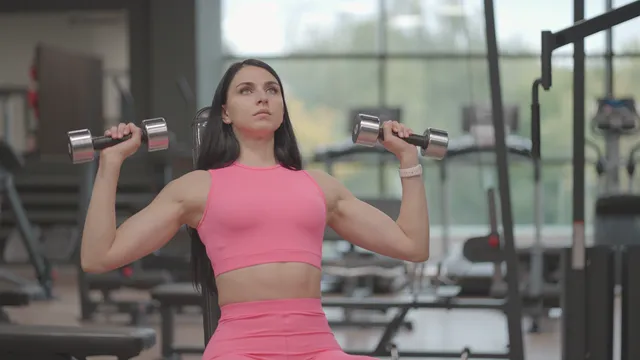
Overhead Shrugs
⚠ Overhead Shrug

Overhead Squats
Notes - This is primarily mobility training. Not a functional movement.
⚠ Overhead Squats

Overhead Sumo Squats
⚠ Overhead Sumo Squats

Pallof Presses
Peacock Plank
Pelvic Floor Dysfunction
Pelvic Floor Dysfunction

Pendant Stretches
Notes - aka: Lolasana; alt: Crow Stretches.
Peripheral Ball Drops
Visual Skills - Peripheral Vision
Peripheral Field
Visual Skills - Peripheral Vision
Peripheral Field Expansion

Pigeon Stretches
Notes - alt: Mermaid Stretches. aka: Swan Stretch; Pigeon Stretch. Stretches the Piriformis and other Hip Exernal Rotators—which are deep Gluteal muscle. Does not stretch the Hip Adductors. Hip Flexors and Hamstrings are stretched by legs being spread apart.
Pike Planks
Pike Pushups
Elevated Pike Pushups

Pilates Barre Arabesque
Pilates Barre Ballet
Pilates Barre Curtsy
Pilates Barre Leg Extensions
Pilates Barre Plié
Pilates Barre Thigh Work
Notes - alt: Power Leg.
Piriformis Strengthening
Pitch Glides
Vocal Skills - Breath Control
Notes - a Stemple Vocal Function exercise. Pronunciation, Diction, Enunciation.
Plank Knee to Elbow
Planks + Rows
⚠ Renegade Row

Plow Stretches
Notes - Leg Raises are needed to get into the stretch. Shoulder Stands should be seen first so that you can learn how to place the weight on the shoulder girdle instead of the neck.
Plyometric Lunges
Notes - No Depth Drops as a prereq b/c Lunge Pulses is the starting variation.
Plyometric Pushups
Powell Raises
Prone Hamstring Curls
Prone Heel Squeeze
Prone Letters
Prone I, T, W, Y's

Prone Quad Stretches
Prone Shoulder Extensions
Notes - This is rehab equivalent of Straight Arm Lat Pulldown.
Prone Shoulder Extension

Pseudo Planche
Psoas March
Pull Throughs
Notes - Not functional: hard to maximize weight because the max depends on standing up straight when the weight is pulling you backwards and you will lose balance.
Pullovers
Pullover
- Flat Bench

Pullups
Jackknife Pullups

Assisted Pullups
- Pullup Bar | Gymnastic Rings

Pullup Negatives

Pullups

Puppy Dog
Pushups
Pyramid Stretch
Qigong
Quad Set
Quadruped + Downward Dog
Quadruped to Downward Dog

Quadruped to Downward Dog Alternating Toe Touches

Quadruped Fire Hydrants
Bent-Knee Fire Hydrant w/ Leg Kicks

Quadruped Glute Kickbacks
Notes - aka. Donkey Kicks;
Quadruped Kick Throughs
Quadruped Kick Through

Quadruped Kick Through Squat

Quadruped Leg Circles
Quadruped Planks
Notes - aka: Beast Planks.
Quadruped Scapular Pushups
Rabbit Stretch
Rack Carries
Two-Hand Rack Carry

One-Hand Rack Carry

Radio Frequency
Ragdoll Stretch
Randolph Shuffle
Visual Skills - Gross-Motor, Fine-Motor, Laterality and Directionality, Visual Spatial Relations, Visual Spatial Orientation
Randolph Shuffle L1
- Increase Difficulty
- Shuffle with your eyes closed.
- Drop out shuffle: Perform regular sequence until commanded to drop out an arm or leg. Continue the rest of sequence until commanded to include arm or leg.
- Pay attention to the feeling and visualize your body position and balance.

Randolph Shuffle L2
- Increase Difficulty
- Do with eyes closed.
- Drop out shuffle: Perform regular sequence until commanded to drop out an arm or leg. Continue the rest of sequence until commanded to include arm or leg.
- Pay attention to the feeling and visualize your body position and balance.

Reading
Ready, Touch, Look, Back
Visual Skills - Eye Movement Control, Peripheral Vision, Gross-Motor, Fine-Motor
Notes - aka. Space Fixator
Ready, Touch, Look, Back: Hands
- Patch one eye, read chart; move patch to your other eye and repeat.
- Train each eye individually before training both eyes together.
- Stand ~16 inches away from the chart. Begin by looking at the center target.
- Say Ready: hold your dominant hand index finger beside your temple. Using your peripheral vision, locate the top target (12:00 position).
- Say Touch: point to the top target without changing your focus from the center target.
- Say Look: move your eyes to look where you are pointing.
- Say Back: return your hand to your side and look back to the center target.
- Repeat steps 1-5 looking at each target working in a clockwise direction.
- Work in the opposite direction.
- Use your non-dominant hand.
- Alternate hands with each target.
- Someone else says "Look, ready, touch, back" while you follow along.
- Only look at 12, 3, 6, 9 o'clock position targets.
- Say and execute the steps in rhythm with a metronome set at 60 bpm.

Ready, Touch, Look, Back: Hands & Feet
- Patch one eye, read chart; move patch to your other eye and repeat.
- Train each eye individually before training both eyes together.
- Stand ~16 inches away from the chart. Begin by looking at the center target.
- Say Ready: hold your dominant hand index finger beside your temple. Using your peripheral vision, locate the top target (12:00 position).
- Say Touch: point to the top target without changing your focus from the center target.
- Say Look: move your eyes to look where you are pointing.
- Say Back: return your hand to your side and look back to the center target.
- Repeat steps 1-5 looking at each target working in a clockwise direction.
- Work in the opposite direction.
- Use your non-dominant hand.
- Alternate hands with each target.
- Someone else says "Look, ready, touch, back" while you follow along.
- Only look at 12, 3, 6, 9 o'clock position targets.
- Say and execute the steps in rhythm with a metronome set at 60 bpm.
- Add your feet in the following order:
- Point with your dominant hand and foot for the entire chart: hands and feet on the same side.
- Use your non-dominant hand and foot for the entire chart.
- Switch between your left and right sides at each target: hands and feet on the same side.
- Use your dominant hand and non-dominant foot for the whole chart: opposite hand and foot.
- Use your non-dominant hand and dominant foot for the whole chart: opposite hand and foot.
- Switch between your left and right sides at each target: opposite hand and foot.

Rear Delt Flyes
Notes - aka. Rear Delt Raises. Not the same as Reverse Flyes. Rear delt flys focus on isolating the posterior deltoids, which are responsible for extending and externally rotating the shoulder joint. The exercise involves standing upright or sitting with a dumbbell or resistance band in each hand, and raising the arms laterally out to the sides until they are parallel to the floor.
Rear Delt Fly

Rear Squats
Rear Squats

Reclined Cow Face Legs Stretch
Notes - alt: Gomukhasana. Stretches the Piriformis and other Hip Exernal Rotators—which are deep Gluteal muscle. Does not stretch the Hip Adductors or Hip Flexors.
Reclined Lotus Fish Stretches
Notes - Stretches the Piriformis and other Hip Exernal Rotators—which are deep Gluteal muscle. Does not stretch the Hip Adductors or Hip Flexors.
Reclined Lotus Stretches
Notes - Stretches the Piriformis and other Hip Exernal Rotators—which are deep Gluteal muscle. Does not stretch the Hip Adductors or Hip Flexors.
Reclining Staff Stretches
Red Light Therapy
Reverse Back Extensions
Notes - aka. Reverse Hyperextensions
⚠ Reverse One-Leg Hyperextensions

⚠ Reverse Hyperextensions

Reverse Clamshells
Reverse Curls
Reverse Curl

Reverse Flyes
Notes - aka. Reverse Raises. Not the same as Rear Delt Flyes. Reverse flys primarily engage the middle and lower trapezius muscles, which are responsible for stabilizing and retracting the shoulder blades. The movement involves lying face down on an incline bench or machine, holding dumbbells or a resistance band in each hand, and raising the arms laterally until they are parallel to the floor.
Reverse Fly

Reverse Forearm Planks
Reverse Frog Pumps
Reverse Lunges + Knee Drive
Reverse Lunge to Knee Drive

Reverse Lunges + Reach
Reverse Lunge w/ Contralateral Reach

Reverse Lunges + Side Bends
Reverse Lunges + Twist
Reverse Nordic Curls
Assisted Reverse Nordic Curl

Reverse Snow Angels
Notes - Lying on the stomach.
Prone Snow Angels

Reverse Tabletop
Notes - alt: Crab.
Reverse One-Leg Tabletop

Reverse Thoracic Spine Extensions
Thoracic Skills - Thoracic Extension
Notes - aka. Reverse Thoracic Extension. Lying on the stomach.
⚠ Reverse Thoracic Spine Extension

Reverse Warrior
Reverse Warrior

Revolved Chair Stretch
Revolved Child's Stretch
Revolved Child's Stretch

Revolved Flying Crow Stretch
Notes - Not the same as Crane, the arms are bent here.
Revolved Forward Folds
Revolved Forward Fold

Revolved Front Standing Hand to Big Toe Stretches
⚠ Revolved Standing Hand to Big Toe Stretch

Revolved Head-to-Knee Stretches
Notes - aka. Seated Revolved Forward Folds
Revolved Horse Stretch
Notes - aka. Revolved Goddess Stretch
Revolved Horse Stretch

Revolved Side Angle Stretches
Revolved Side Angle Stretch

Revolved Side Lunge Stretches
Notes - Not a progression variation of the Side Lunge Stretch because the pose is revolved.
Revolved Side Lunge Stretch

Bound Revolved Side Lunge Stretch

Revolved Triangle Stretch
Notes - Not a duplicate of Pyramid Stretch--this has thoracic rotation.
Roadkill Stretch
Rocking Crab
Rocking Seal
Rolling Like a Ball
Rollout
Romanian Deadlift
Romanian Deadlift

⚠ Split Stance Romanian Deadlift

⚠ One-Leg Romanian Deadlift

Romanian Deadlift + Knee Drive
One-Leg Romanian Deadlift w/ Knee Drive

Romanian Deadlift + Reach
One-Leg Romanian Deadlift w/ Reach

Ronde de Jambe
Rooster Stretches
Notes - alt: Lotus Stretches.
Rotating Plank
Rows
Bodyweight Rows

Neutral-Grip Horizontal Rows

Wide-Grip Horizontal Rows

Russian Pushups
Saccades
Visual Skills - Eye Movement Control, Visual Spatial Memory
Four-Square Saccades
- Hang 4 Hart Charts on the wall at eye level. Stand 3-5' back from the chart.
- Train each eye individually before training both eyes together.
- Read aloud the first letter (or picture) in the top left corner of the chart, then the first letter in the top right corner, proceeding to the bottom left corner, then the bottom right corner. Return to the top left corner block of letters and read the second letter in each corner block. You should read the letter in the same position of each block of letters.
- Once you can keep your place comfortably, add a metronome beat of 40-80 beats per minute.
- Try to read without moving your head. A beanbag on your head may help reduce head movements.

Scale Stretch
Scalene Muscle Release
Cervical Skills - Cervical Tension
Scalene Muscle Strengthening
Cervical Skills - Cervical Tension
Scapular Pulldowns
Scapular Pulldowns

One-Arm Scapular Pulldowns

Scapular Pullups
Scapular Pullups
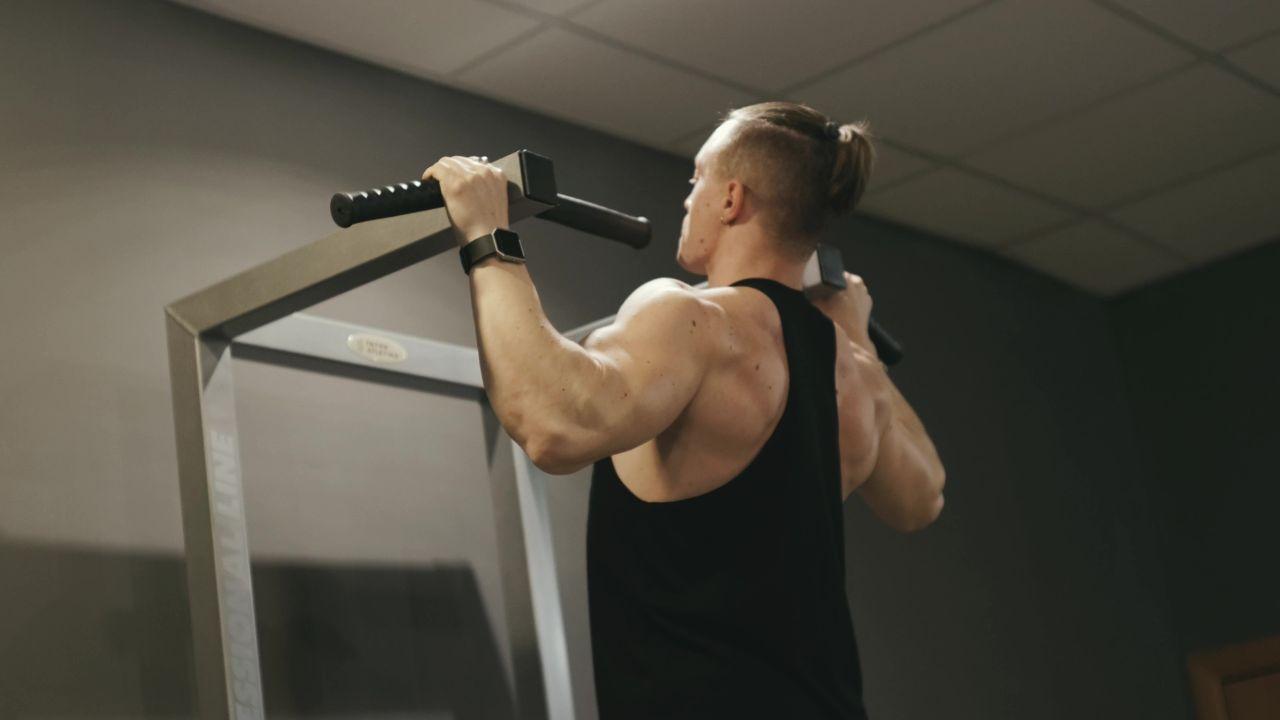
Scapular Retraction
Scapular Stabilization
SCM Muscle Release
Cervical Skills - Cervical Side-bending, Cervical Tension
SCM Muscle Strengthening
Cervical Skills - Cervical Side-bending, Cervical Tension
Seated Forward Folds
Seated Hamstring Curls
Single-Leg Seated Hamstring Curl

Seated Hand to Big Toe Stretches
Seated Legs Behind Head
Notes - Not Rehab/Prehab because the increased flexibility puts you at a higher risk of injury.
Seated Pike Leg Lifts
Notes - aka: Seated Pike Leg Raises; Pike Compressions.
Seated Rows
Seated Rows
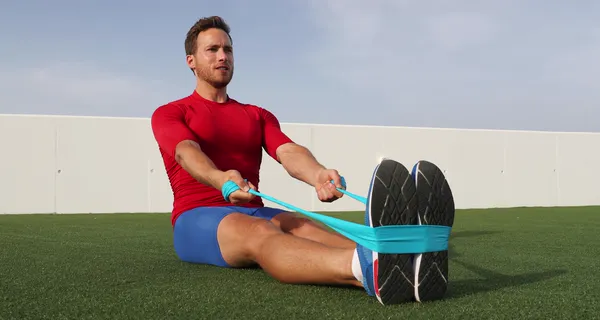
Seated Twists
Notes - aka aka. Marichi's Pose
Seated Wide-Legged Forward Folds
Notes - aka: Seated Straddle Stretches; Pancake Stretches. Not the middle splits, legs aren't parallel with each other.
Serratus Pushups
Shadow Boxing
Shadow Boxing

Shavasana
Notes - aka: Savasana.
Sherman Numbers
Visual Skills - Eye Teaming
Shoulder Controlled Articular Rotations
Shoulder Dislocates
Shoulder External Rotation
Iso Shoulder External Rotation

Shoulder External Rotation

Shoulder Flexion
Notes - This is rehab equivalent of Front Raise.
One-Arm Shoulder Flexion

Shoulder Flexion

Side-Lying Shoulder Flexion

Shoulder Internal Rotation
Shoulder Internal Rotation

Shoulder Letters
Shoulder W's

Shoulder Pendulum
Shoulder Pressing Hold
Notes - aka. Bhujapidasana
Assisted Shoulder Pressing Hold

Shoulder Rotations
Notes - aka. Halos / Around the World
Shoulder Rotations

One-Arm Shoulder Rotations

Shoulder Shrugs
Shoulder Stands
Notes - aka: Candle Stretches. Leg Raises are needed to get into the stretch.
⚠ Supported Shoulder Stand

⚠ Half Shoulder Stand

⚠ Shoulder Stand w/ Knees Bent

⚠ One-Leg Shoulder Stand

Side Angle Stretches
Supported Side Angle Stretch

Assisted Side Angle Stretch

Extended Side Angle Stretch

Side Crow Stretch
Notes - Not the same as Crane, the arms are bent here.
Side Kicks
Notes - Pilates move
Side Lunge Sliders
Kneeling Side Lunge Sliders

Standing Side Lunge Sliders

Side Lunge Stretches
Notes - alt: Lateral Lunges; Cossack Squats.
Side Lunge Stretch

Deep Side Lunge Stretch

Side Lunge Stretches on Toes
Side Lunge Stretch on Toes

Side Plank Powell Raises
Forearm Side Plank Powell Raise

Side Single Leg Raises
Notes - aka: Side Single Leg Lifts.
Side-Lying Leg Lifts

Standing Side Leg Lift

Side Splits
Notes - aka. Middle Splits
Side Standing Hand to Big Toe Stretches
⚠ Side Standing Hand to Big Toe Stretch

Side Throw
Parallel Scoop Throw

Side-Lying Double Leg Raises
Notes - aka: Side Double Leg Lifts.
Side-Lying Double Leg Lifts

Side-Lying Hand to Big Toe Stretches
Side-to-Side Forearms Planks
Notes - aka. Side to Side Forearm Planks
Side-to-Side Squats
Notes - alt: Cossack Squats. Not a duplicate of Cossack Squats b/c you don't go deep. Different from Lateral Squats/Lunges b/c you alternate sides w/o first bringing your feet in.
Single Leg Balance
Sitting-Rising
Assisted Sitting-Rising Test

Sitting-Rising Test

Skater Squats
Assisted Skater Squats

Skater Squats

Slap Tap
Visual Skills - Laterality and Directionality
Slap Tap A
- Slap Tap A: When the circle if right of the line, slap your right hand on your thigh if you are standing, or the table top if you are sitting. When the circle if left of the line, slap your left hand on your thigh if you are stnading, or the table top if you are sitting. When the circle is on the line, slap both of your thighs at the same time.
- Add a metronome.
- The line represents your body. The circles represent your hands. The triangles represent your feet.

Slap Tap B
- Slap Tap B: Circles still indicate your hands. When the triangle is left of the line, stomp your left foot. When the triangle is on the line, hop if you are standing or stomp both feet if you are sitting.
- Add a metronome.
- The line represents your body. The circles represent your hands. The triangles represent your feet.

Slap Tap C
- Slap Tap C: Circes still represent your hands and triangles still represent your feet, but slapping and stomping is done simultaneously with this chart.
- Add a metronome.
- The line represents your body. The circles represent your hands. The triangles represent your feet.

Sleeping Pigeon Stretches
Notes - aka. Sleeping Swan Stretch; Sleeping Pigeon Stretch. Stretches the Piriformis and other Hip Exernal Rotators—which are deep Gluteal muscle. Does not stretch the Hip Adductors. Hip Flexors and Hamstrings are stretched by legs being spread apart.
Sliding Stereo Circles
Visual Skills - Eye Teaming, Convergence, Divergence, Focus Accommodation, Depth Perception
Notes - aka: Eccentric Circles; Variable Tranaglyph. Works on fusion (seeing two images as one), stereopsis (depth perception), and binocularity (both eyes simultaneously).
Sliding Stereo Circles - Peripheral Circle
- Wear red/green glasses with the red lens over your right eye.
- Hold the slides about 16" from your face or at a distance that you see a single circle. Gaze into the center of the large circles while trying to see a single fused circle. Slowly slide the front slide to the right. The green notch should be pointing to the very small red numbers on the top right (diverging, looking far).
- How long can you see one darker circle before it splits into two Venn diagram looking circles?
- How soon can you recapture the single image? You may need to slide the front slide slowly to the left, but try to regain fusion without moving the two circles closer together.
- Do you notice the circle changing size?
- How do the muscles around your eyes feel?
- Where does it look like the single darker circle is?
- You may see faint ghost-like images, but pay attention to the darker circle.
- Next, move the front slide to the left (converging, looking close). The green notch will point to the small red numbers on the bottom left.
- How long can you see the darker circle before it splits into two Venn diagram looking circles?
- How soon can you recapture the single image?
- Can you tell where it looks the circles are?
- Do you notice the circle changing size?
- How do the muscles around your eyes feel?
- What is happening to the size of the circle now?
- Next, move backwards away from the circles.
- Can you still see both circles, see the circle sinking away from you or popping out toward you?
- Can you still see the four small circles outside the larger circles?
- If any of the smaller outer circles disappear or flicker, snapping your fingers beside your temple or tapping your temple may help the circles reappear. This helps by alerting your brain to use both eyes simultaneously.
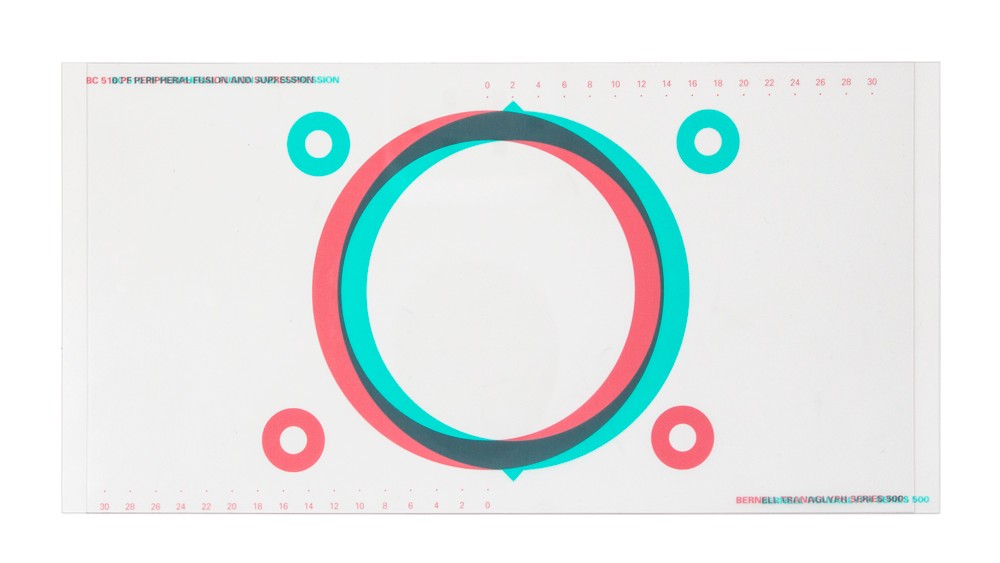
Sliding Stereo Circles - Peripheral Fusion & Stereopsis.
- Wear red/green glasses with the red lens over your right eye.
- Gaze into the center of the double circles, trying to fuse them.
- Do you notice the inner circle floating in front of the outer circle, or sinking farther back?
- The inner circle's depth does not indicate that you are converging or diverging - it will continue to float or sink depending on how you are holding the slides. It is fine to hold them either way - just be aware that the inner circle may appear larger or smaller, closer or farther.
- Do the muscles around your eyes feel different as you move the slides right or left?
- Move backwards away from the circles.
- Can you still see both circles, see the circle sinking away from you or popping out toward you?
- Can you still see the four small circles outside the larger circles?
- If any of the smaller outer circles disappear or flicker, snapping your fingers beside your temple or tapping your temple may help the circles reappear. This helps by alerting your brain to use both eyes simultaneously.
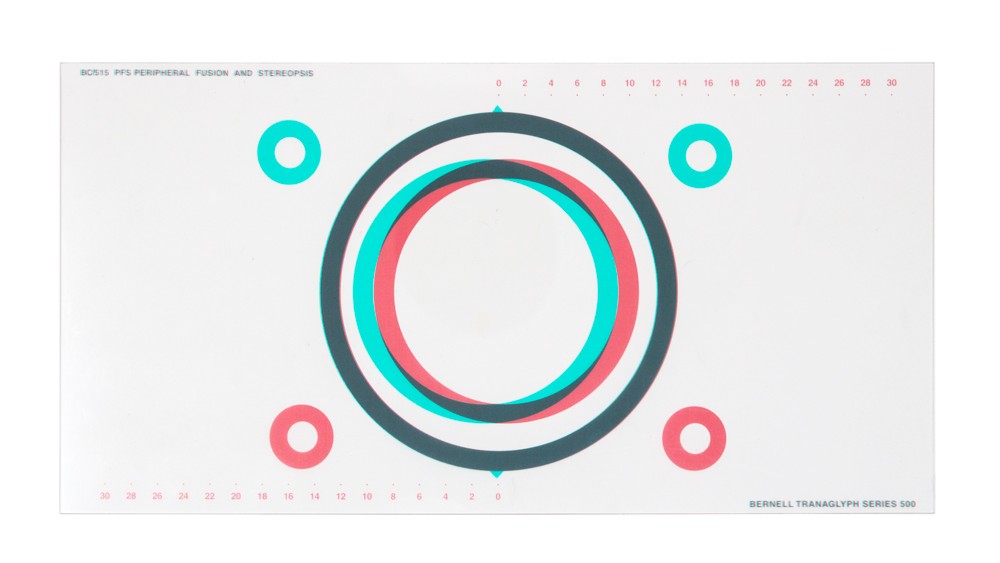
Sliding Stereo Circles - Peripheral & Central Fusion w/ Stereopsis.
- Wear red/green glasses with the red lens over your right eye.
- While noticing the inner ring, the presence of the four small outer circles, and the place in space—closer to you, or back behind the plastic—of the double circle cake-like or bucket-like image, can you also see the ☐-✕-◯ lined up vertically, like a stoplight? Or is the ☐ or the ◯ out of alignment? Can you move the ☐? Can you move the ◯? Separate the slides as described above, while trying to keep the ☐-✕-◯ lined up.
- Next, move backwards away from the circles.
- Can you still see both circles, see the circle sinking away from you or popping out toward you?
- Can you still see the four small circles outside the larger circles?
- If any of the smaller outer circles disappear or flicker, snapping your fingers beside your temple or tapping your temple may help the circles reappear. This helps by alerting your brain to use both eyes simultaneously.

Smooth Pursuits
Visual Skills - Eye Movement Control
Snow Angels
Notes - Lying on the back.
Supine Snow Angels

Spanish Squats
Spanish Squats

Speech Practice
Vocal Skills - Breath Control
Speed Skaters
Notes - aka: Plyometric Curtsy Lunges.
⚠ Speed Skaters

Sphinx Twists
Splenius Capitis Strengthening
Cervical Skills - Cervical Flexion, Cervical Extension, Cervical Rotation, Cervical Side-bending
Split Squats
Assisted Split Squat

Foot-Elevated Split Squat

Split Squats (ATG)
Assisted ATG Split Squat

ATG Split Squat

Split Vision Saccades
Visual Skills - Eye Movement Control, Visual Spatial Memory
Spot the Match
Visual Skills - Eye Movement Control, Visual Spatial Memory
Squat Holds
Squat Presses
Squat Throws
Squats + Adductor Squeeze
Notes - alt: Banded Squats.
Squat w/ Adductor Squeeze

Squats + Forward Fold
Staff Stretches
Notes - If you don't use your arms, this requires a good amount of core strength.
Standing Back Bend
Standing Bow Stretches
Notes - Standing bow opens the body out to the side, the torso comes forward as part of the pose. Eventually working toward a split. Dancer maintains square hips, and the torso coming forward is largely in part due to the backbend & lifting action in the back leg, as opposed to leaning forward while you happen to be reaching back for the back leg. Standing bow, arm and torso parallel to the floor. Dancers, arm and torso at a much higher angle - some cue it as hand to the top of the wall.
Standing Fire Hydrants
Standing Iso Bent-Knee Fire Hydrants
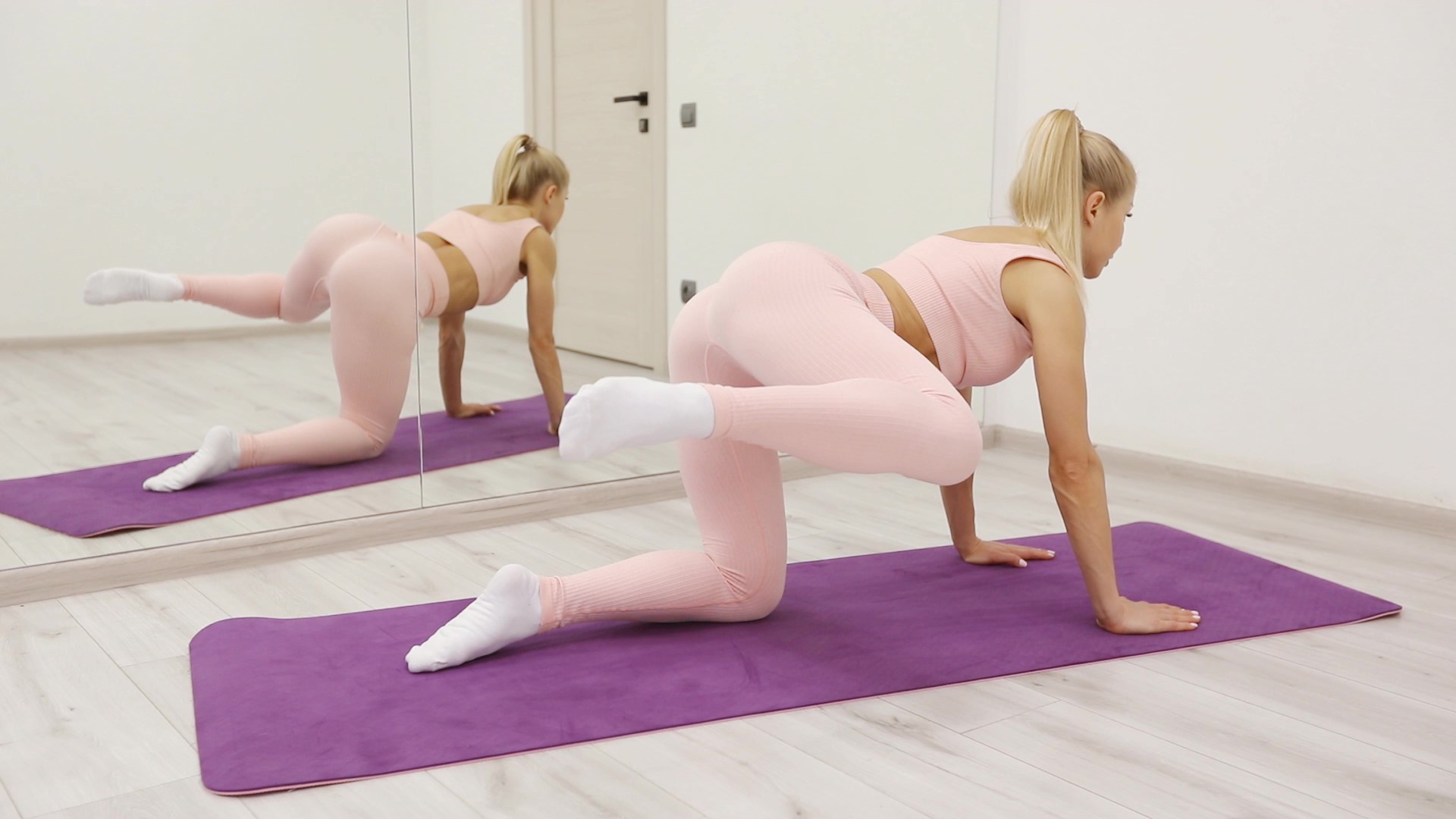
Standing Iso Straight-Leg Fire Hydrants
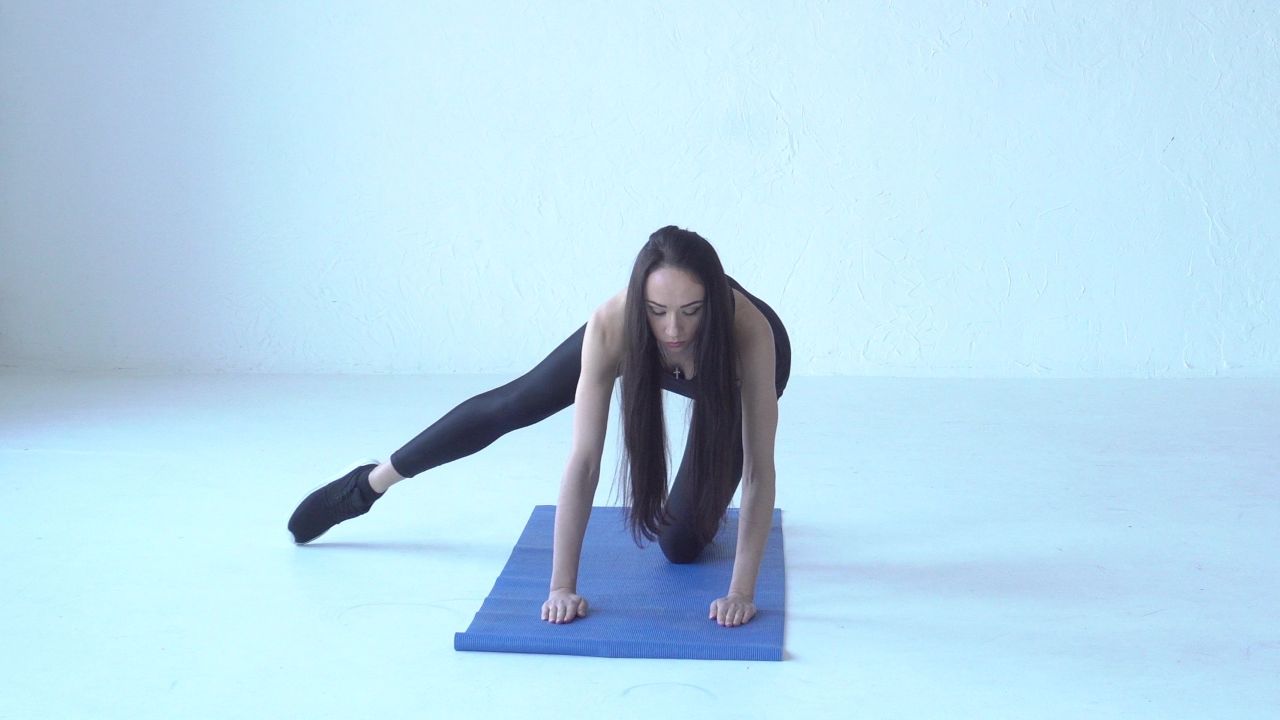
Standing Straight-Leg Fire Hydrants

Standing Forward Folds
Standing Front Splits
Standing Glute Kickbacks
Standing Hamstring Curls
Standing Hamstring Stretches
Notes - These are static stretches.
Standing Hip Flexion
Notes - Easier than leg raises. More prehab focus.
Standing IT Band Stretches
Standing Legs Behind Head
Notes - Not Rehab/Prehab because the increased flexibility puts you at a higher risk of injury.
⚠ Standing One Leg Behind Head

⚠ Standing One Leg Behind Head w/ Forward Fold

Standing Lotus Stretches
Notes - Stretches the Piriformis and other Hip Exernal Rotators—which are deep Gluteal muscle. Does not stretch the Hip Adductors or Hip Flexors.
Standing Quad Stretches
Standing Shoulder Extensions
Notes - This is rehab equivalent of Straight Arm Lat Pulldown.
One-Arm Shoulder Extension

Shoulder Extension

Standing Side Bend
Standing Wide-Legged Forward Folds
Notes - aka: Standing Straddle Stretches. Not the middle splits, legs aren't parallel with each other.
Standing Wide-Legged Forward Fold

Standing Wide-Legged Forward Fold w/ Arms Behind

Star Jacks
Step Downs
Backward Step Downs

Forward Step Downs

Step Ups
Backward Step Ups

Forward Step Ups

Step Ups/Downs
Step Ups/Downs

Sternocleidomastoid Strengthening
Cervical Skills - Cervical Flexion, Cervical Extension, Cervical Rotation, Cervical Side-bending
Stiff-Legged Deadlift
⚠ Stiff-Legged Deadlift

Straight Bridges
Straight Bridges

Straight-Arm Lat Pulldowns
Notes - Shoulder Extension
Straight-Arm Lat Pulldowns

One-Arm Straight-Arm Lat Pulldowns

Straight-Leg Ball Pickup
Straight Leg Ball Pickup

Suboccipital Strengthening
Cervical Skills - Cervical Extension, Cervical Tension
Sugarcane Stretches
Notes - aka: Ardha Chandra Chapasana
Sugarcane Stretch

Suitcase Squats
Suitcase Squats

One-Arm Suitcase Squats

Sumo Deadlift
Sumo Deadlift

Sumo Squats
Assisted Sumo Squats

Sumo Squats

Superman
Notes - Different from Locust in that the arms come forward instead of staying back.
Supine Double Leg Raises
Notes - aka: Supine Double Leg Lifts.
Supine Extended Hand to Big Toe Stretches
Notes - Legs go out to the side.
Supine Hamstring Curls
Supine Hamstring Stretches
Notes - aka: Supine Hand to Big Toe Stretches.
Supine Hip Flexion
Notes - Easier than leg raises. More prehab focus.
Supine Twists
Supine Wide Angle Stretches
Notes - aka: Wide Legged Plow Stretch; Supine Straddle Stretch; Extended Happy Baby Stretch.
Support Hold
Support Hold

Suprahyoid Muscle Release
Cervical Skills - Cervical Tension
Svend Presses
Notes - aka. Crush Presses; Squeeze Presses
Standing Svend Press

Swallowing
Swimming
Tate Press
Terminal Knee Extensions
Terminal Knee Extensions

The Mermaid
Thoracic Skills - Thoracic Side-bending
Notes - Pilates Stretch.
The Saw
Notes - Pilates move
Therapy
Thigh Lifts
Thomas Test
Thoracic Dissociation
Thoracic Skills - Thoracic Extension
Thoracic Rotation
Thoracic Skills - Thoracic Rotation
Seated Thoracic Rotation

Thoracic Spine Extensions
Thoracic Skills - Thoracic Extension
Notes - aka. Thoracic Extension. Lying on the back.
⚠ Thoracic Spine Extension

Thread the Needle
Thumb Game
Visual Skills - Eye Movement Control, Figure Ground
Thunderbolt Stretch
Notes - In Hero Pose, the feet are separated and the buttocks are on the floor, but in Thunderbolt Pose, the heels are together with the buttocks resting on top of them.
Tibial Rotation
Tiger Stretch (Forearms)
Tiger Stretch (Hands)
Tiger Stretch (Revolved)
Revolved Tiger Stretch w/ Bow

TMJ Exercises
Toe Balance Stretches
Toe Curls
Toe Marble Pick-up
Toe Mobility
Toe Raises
Notes - Ankle Dorsiflection
Toe Rocker
Toe Spreads
Notes - aka. Toe Abduction.
Toe Taps
Toe Walk
Notes - Ankle Plantar Flexion. Not a duplicate of Calf Raises b/c we want a seperate progression range for this.
Tongue Clicks
Tongue Curls
Tongue Press
Tongue Shapes
Tongue Strengthening
Tongue Taps
Tongue Trace
Top of Foot Stretch
Tortoise Stretches
Lumbar Skills - Lumbar Flexion
Notes - aka: Turtle Stretches.
Towel Calf Stretches
Towel Twists
Notes - Works on wrist flexion and extension.
Toy Soldiers
Tranaglyphs
Visual Skills - Convergence, Divergence
Notes - Tranaglyphs are similar to vectograms, however instead of there being two different transparent image cards that need to be fused into one, there is one image card with a stereo image already pre-made onto the card.
Tranaglyphs: Convergence
- Place the red lens over your right eye and the green lens over your left eye. Each picture has a number next to it denoting the amount of separation of the red and green images; the larger the number, the more challenging the task.
- Hold the card at a reading distance. Lettering on the card should be forward facing.
- Look at the easiest target first. First, bring the doubled image together until it is clear and single: Look hard and cross your eyes. Notice the ☐, ✕, and ◯ within the double circles.
- If any of these shapes disappear, then supression is present. If this happens, clap your hands, stomp your foot, or move closer to try to see the ☐, ✕, and ◯ again.
- Do you notice anything popping out? Sinking behind?
- Next, proceed to the next hardest target, each time pulling the doubled targets into one single picture. Continue until you reach a set of targets you cannot bring together.
- At this point, it may be necessary to push the card away until fusion is achieved. If you still cannot fuse the targets, return to the next easier one and pull it toward your nose as close as you can until it doubles, then try the next harder picture with it pushed out to arm's reach. If this can be fused, slowly work it toward a normal reading distance or closer before attempting the next target.
- Move the tranaglyph slowly side to side as you keep the images fused.
- Move the tranaglyph in slow, small circles as you keep the picture and stereo circles fused.
- Push and pull the tranaglyph slowly toward and away from you (trombone style) as you keep the picture and stereo circles fused.
- Move the tranaglyph forward and back and in small circles as you walk around the room. Use your peripheral vision to keep track of obstacles in the room.

Tranaglyphs: Divergence
- Place the red lens over your right eye and the green lens over your left eye. Each picture has a number next to it denoting the amount of separation of the red and green images; the larger the number, the more challenging the task.
- Turn the card over so the lettering on the card is backwards. When you do this, the stereo circles which appeared to pop out toward you will seem to sink away from you.
- To maintain fusion, relax and look through the target. To regain fusion, look through the target.
- If supression occurs (the ☐ or the ◯ disappears), blink and/or gently shake the tranaglyph to bring the target back into view. It may also help to change the vergence demand: move the tranaglyph closer or further back.
- Move the tranaglyph slowly side to side as you keep the images fused.
- Move the tranaglyph in slow, small circles as you keep the picture and stereo circles fused.
- Push and pull the tranaglyph slowly toward and away from you (trombone style) as you keep the picture and stereo circles fused.
- Move the tranaglyph forward and back and in small circles as you walk around the room. Use your peripheral vision to keep track of obstacles in the room.

Tranaglyphs
- Place the red lens over your right eye and the green lens over your left eye. Each picture has a number next to it denoting the amount of separation of the red and green images; the larger the number, the more challenging the task.
- Hold the card at a reading distance. Lettering on the card should be forward facing.
- Look at the easiest target first. First, bring the doubled image together until it is clear and single: Look hard and cross your eyes. Notice the ☐, ✕, and ◯ within the double circles.
- If any of these shapes disappear, then supression is present. If this happens, clap your hands, stomp your foot, or move closer to try to see the ☐, ✕, and ◯ again.
- Do you notice anything popping out? Sinking behind?
- Next, proceed to the next hardest target, each time pulling the doubled targets into one single picture. Continue until you reach a set of targets you cannot bring together.
- At this point, it may be necessary to push the card away until fusion is achieved. If you still cannot fuse the targets, return to the next easier one and pull it toward your nose as close as you can until it doubles, then try the next harder picture with it pushed out to arm's reach. If this can be fused, slowly work it toward a normal reading distance or closer before attempting the next target.
- Turn the card over so the lettering on the card is backwards. When you do this, the stereo circles which appeared to pop out toward you will seem to sink away from you.
- To maintain fusion, relax and look through the target. To regain fusion, look through the target.
- If supression occurs (the ☐ or the ◯ disappears), blink and/or gently shake the tranaglyph to bring the target back into view. It may also help to change the vergence demand: move the tranaglyph closer or further back.
- Move the tranaglyph slowly side to side as you keep the images fused.
- Move the tranaglyph in slow, small circles as you keep the picture and stereo circles fused.
- Push and pull the tranaglyph slowly toward and away from you (trombone style) as you keep the picture and stereo circles fused.
- Move the tranaglyph forward and back and in small circles as you walk around the room. Use your peripheral vision to keep track of obstacles in the room.
- Look at one picture on the front and then flip the card over and look at the same picture on the back.
- How quickly can you fuse the two pictures into one image, jumping front to back?

Tranaglyphs: BIM/BOP
- Place the red lens over your right eye and the green lens over your left eye. Each picture has a number next to it denoting the amount of separation of the red and green images; the larger the number, the more challenging the task.
- Using an accommodative flipper lens, alternate between base-in (diverge) + minus lens and base-out (converge) + plus lens.

Tree Stretches
Notes - aka: One-Leg Mountain Stretch
Tree Stretch

Triangle Stretch
Notes - Not a duplicate of Pyramid Stretch--this has thoracic rotation.
Tricep Extensions
Tripod Headstand Front Splits
⚠ Tripod Headstand Front Splits

Tripod Headstand Side Splits
⚠ Tripod Headstand Side Splits

Tripod Headstands
Turkish Get-Ups
2/4 Turkish Get-Up

3/4 Turkish Get-Up

Turkish Get-Up
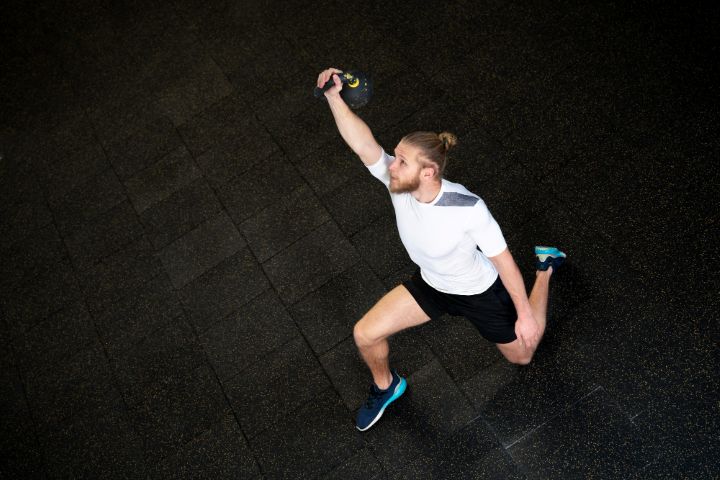
Upper Trap Muscle Inhibition
Cervical Skills - Cervical Tension
⚠ Deactivate and Relax the Upper Traps

Upper Trap Muscle Strengthening
Cervical Skills - Cervical Tension
Upright Rows
Notes - The internal rotation to which you expose your shoulders is one of the most harmful exercises you can do, causing similar damage to triceps dips. As a demonstration, hold your arms straight out to your sides with your palms facing down.
⚠ Wide-Grip Upright Row

Upward Facing Dog
Notes - aka: Upward Dog.
Upward Facing Dog

Upward Facing Wide Angle Stretches
Notes - Isotonic variation is Open Leg Rocker
Vagus Nerve Stimulations
Vertical Cohen Circle Chart
Visual Skills - Eye Teaming, Convergence, Divergence, Focus Accommodation
Vertical Cohen Circle Chart L1
- Hang the Cohen circle chart with the stripe in the vertical position at eye level on a window so you can look through it at objects in the distance. Wear red/green glasses with the red filter over your right eye.
- You'll need to do this during the day when it is light outside.
- Looking at the Cohen Chart, describe what you see:
- Where do you see the circle in relation to the black stripe?
- Is the circle stable or does it move around and change?
- Can you hold it still on the center of the stripe?
- Can you figure out how to change where the circle touches the stripe?
- Where does it feel like you need to look to put the circle: on the right side of the stripe? on the left side of the stripe? in the center of the stripe?
- Move the circle as far as you can to each side and hold it there for 3 seconds. Slowly bring it back to the center of the stripe. Move the circle halfway out on each side.
- Can you hold it there for 3 seconds, then slowly bring it back to center?
- Can you line up the circle so that its edge just rests on the outside edge of the stripe?

Vertical Cohen Circle Chart L2
- Hang the Cohen circle chart with the stripe in the vertical position at eye level on a window so you can look through it at objects in the distance. Wear red/green glasses with the red filter over your right eye.
- You'll need to do this during the day when it is light outside.
- Look at the chart and visually hold the circle still on the stripe. Place the prism in front of one eye. When the circle shifts position, using your eyes, move it back to the middle of the stripe again. Prism base-out: all distances, 12 inches to 12 feet. Prism base-in: closer distance, 12 inches to 3-6 feet, as possible.

Vertical Jumps
Vestibular Saccades
Visual Skills - Eye Movement Control, Visual Spatial Memory
Vestibulo-Occular Reflex
Visual Skills - Eye Movement Control
Visualizations
Visvamitrasana
Half Visvamitrasana

Visvamitrasana

VMO Strengthening
Vocal Articulation
Vocal Skills - Breath Control
Notes - Pronunciation, Diction, Enunciation.
Vocal Cord Adduction
Vocal Skills - Breath Control
Notes - Pronunciation, Diction, Enunciation. aka. Vocal Cord Strengthening.
Vocal Projection
Vocal Skills - Breath Control
Notes - Pronunciation, Diction, Enunciation.
Vocal Resonance
Vocal Skills - Breath Control
Notes - Pronunciation, Diction, Enunciation.
Vocal Straw Exercises
Vocal Skills - Breath Control
Notes - Pronunciation, Diction, Enunciation.
Wachs' Mental Minus
Visual Skills - Focus Accommodation
Wachs' Mental Minus: Trombone
- Negative Meniscus (Diverging) Lens
- Patch one eye. Hold the small letter chart about 16" from your eyes or stand 4-6' back from the larger letter chart.
- Place the lens directly in front of your unpatched eye. You should notice some blur, the print should become clearer after your eye adjusts to the lens. If the print remains blurry, move the lens away from your eye until the letters are clear. Bring the lens slowly back toward your eye, maintaining clarity.
- How quickly can you clear the blur?
- Can you maintain clarity or does the chart become blurry again?
- Are you aware of where you are looking to make the chart clear?
- How does it feel to make it clear?
- Do you notice the chart seem to move? If so, where does it move?
- To clear the image in the lens, you are focusing either in front of or behind the actual print. Practice looking hard and soft, focusing near and far, until you are able to make the print blurry. Bring in the lens and see if the image instantly clears. Practice adjusting where you are focusing until you can instantly clear the image when you bring in the lens.
- Repeat for your other eye. Note any differences between your eyes. Repeat until each eye performs equally well.

Wachs' Mental Minus: Lens On - Clear / Lens Off - Clear
- Negative Meniscus (Diverging) Lens
- Patch one eye. Hold the small letter chart about 16" from your eyes or stand 4-6' back from the larger letter chart.
- Place the lens in front of your unpatched eye. Make the letters clear as quickly as possible.
- Remove the lens and clear the letters as quickly as possible. Repeat the process over and over.
- Can you FEEL your eye doing anything? Work until you are able to tune in to the change of feeling in your eye.
- Repeat for your other eye. Note any differences between your eyes. Repeat until each eye performs equally well.

Wachs' Mental Minus: Lens On - Blur / Lens Off - Clear
- Negative Meniscus (Diverging) Lens
- Patch one eye. Hold the small letter chart about 16" from your eyes or stand 4-6' back from the larger letter chart.
- Look at the small letter chart. Bring the lens in front of your eye but don't try to clear it.
- The eye will naturally want to clear the image. By concentrating on how it feels, you can keep your focus where it was before you brought in the lens.
- Try this several times until you are able to keep the image blurry when you bring the lens in.
- Repeat for your other eye. Note any differences between your eyes. Repeat until each eye performs equally well.

Wachs' Mental Minus: Lens On - Clear/Blur
- Negative Meniscus (Diverging) Lens
- Patch one eye. Hold the small letter chart about 16" from your eyes or stand 4-6' back from the larger letter chart.
- Look at the print with the lens. See it blur, then get clearer. Keeping the lens in place, see if you can get the print to blur back to the way it was when you first put the lens in front of your eye.
- Try looking hard, soft, close, and far until you are able to blur the lens.
- Experiment to see how much of a blur you can produce and then clear.
- Repeat until you develop a feel for what you are doing to make it blur.
- Repeat for your other eye. Note any differences between your eyes. Repeat until each eye performs equally well.

Wachs' Mental Minus: Lens On - Clear / Lens Off - Blur
- Negative Meniscus (Diverging) Lens
- Patch one eye. Hold the small letter chart about 16" from your eyes or stand 4-6' back from the larger letter chart.
- Clear the letters while using the lens.
- Think about how it feels to have your focus clear using the lens.
- Take the lens off and try to keep your focus where it was. Replace the lens and see if the letters are still clear.
- The print will be blurry if you are able to keep your accommodative position the same.
- Repeat this activity until you are able to keep the image blurry without the lens, but clear with it.
- Repeat for your other eye. Note any differences between your eyes. Repeat until each eye performs equally well.

Wachs' Mental Minus: Blur - Lens Off / Clear - Lens On
- Negative Meniscus (Diverging) Lens
- Patch one eye. Hold the small letter chart about 16" from your eyes or stand 4-6' back from the larger letter chart.
- Using your unpatched eye, try to change your accommodation so that when you place the lens in front of your eye, the letters will be clear.
- The text will be blurry at this point.
- Place the lens in front of your eye. If there is a match between the visualized amount of accommodation and the amount required using the lens, there should be no change in your eye's focus when you replace the lens.
- Is there a match in space between the point in space where you converged and focused and the perceived feeling, awareness and location of the chart?
- Repeat for your other eye. Note any differences between your eyes. Repeat until each eye performs equally well.

Wachs' Mental Minus: Split Pupil Lens Rock
- Negative Meniscus (Diverging) Lens
- Patch one eye. Hold the small letter chart about 16" from your eyes or stand 4-6' back from the larger letter chart.
- Position yourself a few feet from the Marsden ball. Hold the lens at your arm's distance. View both the Marsden ball not seen through the lens and the image of the ball seen withing the lens simultaneously.
- Note differences in size, clarity, distance, and speed of motion.
- Repeat for your other eye. Note any differences between your eyes. Repeat until each eye performs equally well.

Wachs' Mental Minus: Biocular
- Negative Meniscus (Diverging) Lens
- Don't use an eye patch for this level.
- Hold the small letter chart about 16" from your eyes or stand 4-6' back from the larger letter chart.
- Hold the lens in front of one eye. You should see two images. If not, jiggle the lens until the two images are seen: one small shaky target superimposed on a larger stationary target.
- Clear and blur the image while looking through the lens. The image outside the lens should be used as a supression check.
- Are you aware of where the letter charts appear to be?
- Are you aware of a size difference?
- Repeat for your other eye. Note any differences between your eyes. Repeat until each eye performs equally well.

Walking
Walking Figure 4
Notes - Stretches the Piriformis and other Hip Exernal Rotators—which are deep Gluteal muscle. Does not stretch the Hip Adductors or Hip Flexors.
Walking Knee Hugs
Walking Knee Hugs

Walking Lunges
Walking Lunges

Wall Angels
Notes - aka. Cactus Press
Floor Angels

Wall Angels

Wall Ball Squats
Notes - alt: Squats + Adductor Squeeze.
Wall Ball Iso Squats

Wall Ball Squats
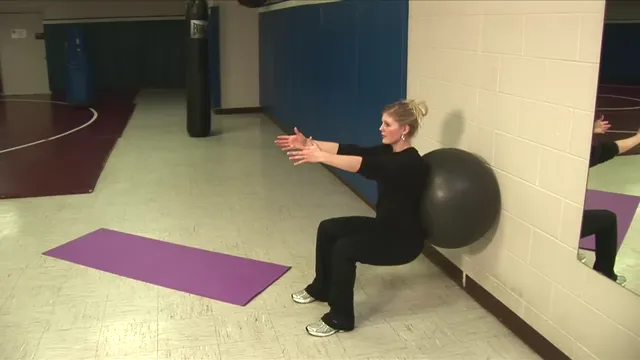
Wall Calf Stretches
Wall Clamshells
Notes - aka: Glute Medius Wall Lean.
Wall Facing Squats
Thoracic Skills - Thoracic Dissociation
Notes - aka: Wall Squats.
Wall Facing Squats

Wall Sits
Wall Slides
Warrior I
Notes - In Warrior 1, your back heel is placed down on the floor and your toes are angled away from your body. In High Lunge, your back heel is lifted, and your toes face forward.
Warrior II
Warrior III
Notes - aka. Airplane Pose
Waves and Clouds
Notes - Tai Chi
Wild Thing
Woodchoppers
Woodchopper

World's Greatest Stretch
World's Greatest Stretch

Wrist Curls
Notes - Works on wrist flexion and extension.
Wrist Extension Mobility
Wrist Flexion & Extension Mobility
Wrist Flexion Mobility
Wrist Pronation & Supination Strengthening
Notes - aka. Wrist Rotations; Wrist Twists
Wrist Ulnar & Radial Deviation Strengthening
Zenith Rotations
Notes - aka. Quadruped Thoracic Rotations
Zenith Rotations

- Fitness Tips - A full night's sleep gives your body time to recover, conserve energy, and repair and build up the muscles worked during exercise. [acefitness.org]
- Fitness Tips - As the years pass, muscle mass in the body generally shrinks, and strength and power decline. Sarcopenia—defined as age-related muscle loss—can begin at around age 35 and occurs at a rate of 1-2 percent a year for the typical person. Studies suggest that strength and power training can help reverse these effects and restore muscle function. [health.harvard.edu]
- Fitness Tips - As you start out, it's best to build muscle endurance with high reps and low sets. As you progress, use higher weights with lower reps and more sets to build strength.
- Fitness Tips - Avoid doing too much, too soon. Never increase the length of your workouts by more than 10 percent from one week to the next, and never increase both the length and intensity of your workout at the same time. [stanfordchildrens.org]
- Fitness Tips - Back muscles and your core help to stabilize your body. If your core is weak, the other surrounding muscles have to compensate. Over time, these muscles can suffer strain, which leads to lingering pain. [health.harvard.edu]
- Fitness Tips - Be aware that training too hard or too often can cause overuse injuries like stress fractures, stiff or sore joints and muscles, and inflamed tendons and ligaments. [health.harvard.edu]
- Fitness Tips - Bend at the hips and knees, not at the waist. [urmc.rochester.edu]
- Fitness Tips - Breathe comfortably and continuously while stretching. [health.harvard.edu]
- Fitness Tips - By sitting all day, you’re not depending on your powerful lower body muscles to hold you up. This leads to muscle atrophy, which is the weakening of these muscles. Without strong leg and glute muscles to stabilize you, your body is at risk of injury. [healthline.com]
- Fitness Tips - Choose clothes and shoes designed for your type of exercise. Replace shoes or insoles as the cushioning wears out. [health.harvard.edu]
- Fitness Tips - Don't be discouraged if you stop for a while. Everybody needs a holiday. Get started again gradually and work up to your old pace. [heart.org]
- Fitness Tips - Don't exercise immediately after eating. [health.harvard.edu]
- Fitness Tips - Even mild dehydration can lead to increased post-workout fatigue and pain. Most people underestimate the amount of water they lose through sweat. [strongerbyscience.com]
- Fitness Tips - Focus on form, not weight. Align your body correctly and move smoothly through each exercise. Poor form can prompt injuries and slow gains. [health.harvard.edu]
- Fitness Tips - For increased stability work, try switching out a bench or chair for an exercise ball.
- Fitness Tips - For plyometric training to be effective, it needs to provide a high neural stimulus with no to very little fatigue. [christianbosse.com]
- Fitness Tips - For strength training, good form is essential. Initially use no weight, or very light weights, when learning the exercises. [health.harvard.edu]
- Fitness Tips - For the best strength gain, lift weights at around 60-80% of your 1 rep max (the most weight you can safely lift for 1 rep in good form). Perform reps until muscle failure or until you can no longer maintain good form. [healthline.com]
- Fitness Tips - Give muscles time off. Strength training causes tiny tears in muscle tissue. These tears aren't harmful, but they are important: muscles grow stronger as the tears knit up. Always give your muscles at least 48 hours to recover before your next strength training session. [health.harvard.edu]
- Fitness Tips - Hard training imposes a large stress on the body and the fatigue you accumulate can mask your gains. A period of reduced training (or tapering) can help you recover, reduce your stress, and reveal the strength you gained during your hard training cycle. [health.harvard.edu]
- Fitness Tips - Hold onto pullup bars or fitness rings using your fingers. This will help build better grip strength and will help prevent calluses from your palm slipping down the bar. [stronglifts.com]
- Fitness Tips - If an exercises causes pain, the solution is simple. Stop doing it, and find a similar one that doesn't. There is no single 'must do' exercise that can't be replaced with something else. — Christian Finn
- Fitness Tips - If you stop exercising for a while, drop back to a lower level of exercise initially. [health.harvard.edu]
- Fitness Tips - If you struggle to maintain good form during an exercise, drop back to an easier variation of the exercise to build those stabilizing muscles necessary for good form.
- Fitness Tips - Incorporate strength into your everyday life: Squat instead of bending over; Squat up from a seated position; Take the stairs; Use a standing desk; Sit on an exercise ball; Walk with ankle weights/a weighted vest; Ride a bike to local restaurants.
- Fitness Tips - Injured muscle tissue responds much better to gentle exercise and movement than it does vigorous stretching. [physio-network.com]
- Fitness Tips - Isometric strength training develops strength that is extremely specific to the range of motion trained. This can be helpful in training weak points. For example, isometric holds in the bottom of a squat (pause squats), or isometric deadlift holds just above or below your sticking point can help bust plateaus. [thebarbellphysio.com]
- Fitness Tips - It is tempting to avoid the motions that cause you discomfort. But limiting your movements can weaken muscles and make compound joint trouble worse. [health.harvard.edu]
- Fitness Tips - It's important to know your limits and not exceed them when exercising or participating in physical activities. Proper care of your joints can preserve function in the long term and encourage physical activity. [stanfordchildrens.org]
- Fitness Tips - It's recommended to get at least 150 minutes of moderate-intensity or 75 minutes of vigorous exercise per week. [cdc.gov]
- Fitness Tips - Keep challenging muscles by slowly increasing weight or resistance. The right weight for you differs depending on the exercise. Choose a weight that tires the targeted muscle or muscles by the last two repetitions while still allowing you to maintain good form. If you can't do the last two reps, choose a lighter weight. When it feels too easy to complete add weight (roughly 1 to 2 pounds for arms, 2 to 5 pounds for legs), or add another set of repetitions to your workout (up to three sets). If you add weight, remember that you should be able to do all the repetitions with good form and the targeted muscles should feel tired by the last two. [health.harvard.edu]
- Fitness Tips - Keep in shape. A high cardiovascular fitness level is crucial to avoid joint injuries. Otherwise, as you tire your form can fail and your joints carry unbalanced weight. [stanfordchildrens.org]
- Fitness Tips - Large volumes of predominantly plyometric training, such as sports, may lead to imbalances in muscle and tendon properties and eventually result in injury. An imbalance in muscle and tendon properties can be prevented by regularly performing heavy resistance training. [basvanhooren.com]
- Fitness Tips - Listen to your body. Hold off on exercise when you're feeling faint, fatigued or suffer persistent aches and pains in joints after exercising. [health.harvard.edu]
- Fitness Tips - Look straight ahead at a distant object when you do unstable exercises. If you look at the floor when you do exercises that challenge your balance and stability, it'll shift your weight forward, putting stress on your lower back. [menshealth.com]
- Fitness Tips - Muscle length and strength between opposing muscle groups need to be in balance for normal movement and function. [healthline.com]
- Fitness Tips - Never sacrifice good form by hurrying to finish reps or sets, or struggling to lift heavier weights. [health.harvard.edu]
- Fitness Tips - Never skip your warm-up or cool down. Tight or stiff muscles around a joint will make the area more prone to injury. This is especially important in sports that require quick movements, such as basketball and tennis. [stanfordchildrens.org]
- Fitness Tips - One of the most important contributors to muscular growth is the tension that muscle fibers experience under load. Want to buff a certain muscle? Squeeze it throughout the exercise. [ironmaster.com]
- Fitness Tips - Pay attention to your breathing during your workouts. Exhale as you work against resistance by lifting, pushing, or pulling; inhale as you release. [health.harvard.edu]
- Fitness Tips - Plan to start slowly and boost your activity level gradually unless you are already exercising frequently and vigorously. [health.harvard.edu]
- Fitness Tips - Protein is an important macronutrient essential for muscle protein synthesis (MPS), muscle growth and function. [verywellfit.com]
- Fitness Tips - Research teams from Harvard and elsewhere found that people who practiced yoga improved two markers of frailty — walking speed and the ability to get up from a chair — compared with people who didn't practice yoga. [health.harvard.edu]
- Fitness Tips - Self-monitoring diet and weight increases self-awareness, and this has been shown to positively influence eating and exercise behaviors. [journals.lww.com]
- Fitness Tips - Sitting at a desk? Consider seated calf raises (with ankle weights) to strengthen the lower legs.
- Fitness Tips - Standing at a desk? Consider standing calf raises (with a weighted vest or ankle weights) to strengthen the lower legs.
- Fitness Tips - Stick with your routine — working all the major muscles of your body two or three times a week is ideal. [health.harvard.edu]
- Fitness Tips - Stretch only to the point of mild tension, never to the point of pain. [health.harvard.edu]
- Fitness Tips - Take five to 10 minutes to warm up and cool down properly. [health.harvard.edu]
- Fitness Tips - Tendons lag behind muscles by 2-5 years in their strength adaptation – depending on how one uses them. Don’t push harder or increase your loads at a rate faster than what your tendons can adapt to. — Dr. Nikita A. Vizniak
- Fitness Tips - The last few difficult repetitions, when the speed of movement slows down due to fatigue, are important for creating adaptation. [human-movement.com]
- Fitness Tips - The Shavasana pose is a great way to relax and relieve tension in the body after a workout.
- Fitness Tips - Think of exercise as medicine – you need to follow the prescription to reap the benefits. Don't neglect exercise, but don't go overboard either. Moderation is key.
- Fitness Tips - To increase hypertrophy (muscle mass), rest for 30-90 seconds between sets. [bodybuilding.com]
- Fitness Tips - To increase muscular endurance, rest for 30 seconds or less between sets. [bodybuilding.com]
- Fitness Tips - To increase strength and power, rest for 2-5 minutes between sets. [bodybuilding.com]
- Fitness Tips - Train smart by cross-training. Repetitive-motion injuries caused by doing just one sport or workout are some of the most common. You can prevent them by doing different sports or activities that work different muscles. For example, if you mostly ride a bike, take a core-strengthening class once a week. [stanfordchildrens.org]
- Fitness Tips - Use music or audio books to keep you entertained while you workout.
- Fitness Tips - Varying exercise selection has a positive effect on enhancing motivation to train, while eliciting similar improvements in muscular adaptations. [ncbi.nlm.nih.gov]
- Fitness Tips - Vitamin D is crucial for adequate calcium absorbtion necessary to create strong, healthy bones. [health.harvard.edu]
- Fitness Tips - Watch for signs of overheating, such as headache, dizziness, nausea, faintness, cramps, or palpitations. [health.harvard.edu]
- Fitness Tips - When learning a strength training routine, many experts suggest starting with no weight, or very light weight. Concentrate on slow, smooth lifts and equally controlled descents while isolating a muscle group. [health.harvard.edu]
- Fitness Tips - When you think about your body as a garden, it’s almost ludicrous to even consider the idea of forcing some type of adaptation. All you can do is nurture it and provide it with the best conditions for growth. You fertilize it, tend the soil, uproot the weeds, water it, leave it in the sunlight, and give it the best conditions for growth. It will only grow as well as its circumstances allow. That’s a much more accurate metaphor for how training works. — Greg Nuckols
- Fitness Tips - Working at the right tempo helps you stay in control rather than compromise strength gains through momentum. For example, count to three while lowering a weight, hold, then count to three while raising it to the starting position. [health.harvard.edu]
- Fitness Tips - You body is meant to move. Shift positions, or get up to move around every hour of the day. [health.harvard.edu]
- Fitness Tips - You tear muscle fibers in the gym and repair/grow stronger muscle while you rest. Recovery time is incredibly crucial to a fitness regimen. [healthline.com]
- Health Tips - A truly ergonomic workstation is one that you regularly push away from.
- Health Tips - Be mindful of your posture throughout the day, and realign yourself regularly.
- Health Tips - Eating too many foods made with refined flour can affect your blood pressure and diabetes risk over time. Look for foods labeled "100% whole grain" to maximize the fiber and nutrient content of the grain products you buy. [health.harvard.edu]
- Health Tips - Expose your eyes to natural light.
- Health Tips - Look away from screens and squeeze your eyes shut periodically to maintain good eye health. [health.harvard.edu]
- Health Tips - Paying attention to posture can help you look and feel better. [health.harvard.edu]
- Health Tips - Practicing everyday mindfulness can also improve your memory and concentration skills and help you feel less distracted and better able to manage crises. [health.harvard.edu]
- Health Tips - Spending just 5 minutes writing tomorrow’s to-do list before bed can help you fall asleep up to 15 minutes faster. [pmc.ncbi.nlm.nih.gov]
- Health Tips - The most powerful way to protect the brain is to live a healthy lifestyle. The healthy habits to include are summed up with the acronym SHIELD: Sleep at least seven hours a night, Handle stress, Interact with friends, Exercise daily, Learn new things, and eat a healthy Diet. [health.harvard.edu]
- Health Tips - When sitting down, keep your chin parallel to the floor; your shoulders, hips, and knees at even heights; and your knees and feet pointing straight ahead. [health.harvard.edu]
- Fitness Facts - Adding yoga to aerobic exercise may help lower high blood pressure. [health.harvard.edu]
- Fitness Facts - Enjoyment for high-intensity interval exercise increases with chronic training. [ncbi.nlm.nih.gov]
- Fitness Facts - Exercise is considered the most effective, non-drug treatment for reducing pain and improving movement in people with arthritis. [arthritis.org]
- Fitness Facts - Limited ankle mobility manifests itself as a functional limitation in everyday tasks such as walking, negotiating stairs, and even in athletic endeavors such as achieving proper squat depth or cutting. [theprehabguys.com]
- Fitness Facts - Muscle and tendon injuries tend to occur when the muscle is overloaded, especially in a lengthened position. Eccentric exercises load the muscle while it is getting longer. This type of training has been shown to help prevent injuries. [foreverfitscience.com]
- Fitness Facts - Strength is key for a healthy body. Mobility and flexibility allow us to feel supple and move with less restriction. [health.harvard.edu]
- Fitness Facts - The risk of injury increases by up to 70 percent when young athletes get less than eight hours of sleep. [pubmed.ncbi.nlm.nih.gov]
- Health Facts - Adults who stay well-hydrated appear to be healthier, develop fewer chronic conditions, such as heart and lung disease, and live longer than those who may not get sufficient fluids. [nih.gov]
- Health Facts - Although rarely diagnosed, hypochlorhydria affects an estimated 5–10% of the population and increases with age. It is even more common in those with digestive issues like bloating, heartburn, or slowed digestion. Causes include autoimmune gastritis (often linked to Hashimoto’s thyroiditis), H. pylori infection, and long-term use of acid-suppressing drugs like proton pump inhibitors (PPIs). — Dr. William Davis
- Health Facts - An examination of four studies that together included more than 8,600 people found that eating more saturated fat led to a 39% higher risk for Alzheimer's and more than double the risk for dementia in general. For each additional 4 grams per day of saturated fat people consumed, the risk for dementia increased by 15%. [health.harvard.edu]
- Health Facts - Apples. Maybe it's true what they say about an apple a day. A study of nearly 35,000 women, found that consumption of this fruit—along with its relative, pears—was linked with a lower risk of death from heart disease. The star components of apples—fiber, vitamin C, pectin, and polyphenols—have been associated, primarily in animal studies, with anti-inflammatory effects and an increase in beneficial microbes in the gut. — Harvard Medical School
- Health Facts - Berries. From strawberries and blackberries to cranberries and blueberries, these gemlike fruits are particularly potent in antioxidant and anti-inflammatory activity. Along with fiber and vitamin C, berries possess plant pigment phytochemicals, such as anthocyanins and ellagic acid, which may be behind their health benefits. Studies have linked increased berry consumption with lower risks of heart disease, Alzheimer's disease, and diabetes. — Harvard Medical School
- Health Facts - Both unprocessed and processed red meat are linked to higher risks of cardiovascular disease and diabetes, with no apparent difference in risk between men and women. [health.harvard.edu]
- Health Facts - By harnessing the power of vasoconstriction and vasodilation, [cold water] therapies stimulate blood flow, deliver oxygen and nutrients, and remove cellular waste more efficiently. [coldplungeculture.com]
- Health Facts - Citrus. Oranges, grapefruit, lemons, and limes are famously rich in vitamin C. They also contain fiber, potassium, calcium, B vitamins, copper, and anti-inflammatory phytochemicals such as flavonoids and carotenoids. Though there is little human research on citrus, the nutrients found in citrus fruits have been associated with heart-protective effects. — Harvard Medical School
- Health Facts - Drugs like Prilosec and Protonix are frequently prescribed for presumed excess stomach acid, artificially creating the same effects as atrophic gastritis. This can lead to nutrient deficiencies, bacterial overgrowth, and long-term digestive dysfunction. Low stomach acid is also linked to vitamin B12 and iron deficiencies, which can cause anemia and require alternative supplementation methods like sublingual or injectable forms. — Dr. William Davis
- Health Facts - Emerging evidence shows that nearly 25% of non-antibiotic medications alter the gut microbiota, disrupting microbial diversity and ecosystem functions for weeks to months, or longer. Such changes can affect systemic immunity, inflammation, glucose metabolism, and overall homeostasis, particularly with chronic polypharmacy. — Jeannie Gorman, MS, CCN
- Health Facts - Grapes. These succulent fruits are bursting with fiber, vitamins C and K, and powerful phytochemicals. — Harvard Medical School
- Health Facts - On the days people drank coffee, they took an average of 1,000 extra steps per day. But they slept about 36 fewer minutes per night, on average. [health.harvard.edu]
- Health Facts - Once stomach acid-producing cells are lost, they do not regenerate. However, certain strategies can help improve digestion. Betaine HCL (500–2000 mg at meals) is the most effective, while vinegar (like apple cider vinegar) can also help. B. subtilis probiotic drinks, particularly when fermented properly, may play a crucial role in managing the microbial imbalances caused by low stomach acid. While these approaches may not prevent stomach atrophy or cancer, they can support digestion and gut health. — Dr. William Davis
- Health Facts - People who'd averaged at least 12 hours a day sitting were 63% likelier to develop dementia than those who'd spent less than 10 hours daily in a chair. Furthermore, exercise didn't seem to change those odds, since among people who sat for 10 hours or more daily, those who worked out were as prone to dementia as those who exercised very little. [health.harvard.edu]
- Health Facts - Pomegranates. Those tiny pomegranate seeds contain big rewards of vitamins C and K, potassium, fiber, and potent phytochemicals such as anthocyanin and resveratrol. These nutrients may be behind the potential benefits of eating pomegranates. — Harvard Medical School
- Health Facts - Red meat, butter, cream, whole milk. All of these animal-based foods are high in saturated fat, which raises blood levels of unhealthy LDL cholesterol. When cholesterol builds up in arteries, it sets off a chain of events that can ultimately lead to a stroke. [health.harvard.edu]
- Health Facts - Spending just three hours a day outside soaking up natural light can make a huge difference on vision. It can help lower the risk of children and young adults developing myopia, or nearsightedness as it’s commonly known. [rebuildyourvision.com]
- Health Facts - Stone fruits. Cherries, peaches, apricots, and plums are all examples of stone fruits. These fruits contain fiber, vitamin C, potassium, and a variety of phytochemicals associated with their colors. For example, cherries have garnered the lion's share of the research among stone fruits. Some studies suggest that cherries can reduce pain and soreness after exercise as well as a reduced risk of gout attacks. The high levels of phenolic compounds in cherries, which have been linked to reduced inflammation, may be behind those benefits. — Harvard Medical School
- Health Facts - Studies show that spending time outdoors can decrease a child's risk of developing myopia. [health.harvard.edu]
- Health Facts - The normal pH of the stomach (1.5–3.0) is highly acidic, allowing for the breakdown of proteins, fats, and other nutrients. It also acts as a defense system, killing harmful bacteria like E. coli and Klebsiella before they can colonize the small intestine. When stomach acid is low (hypochlorhydria), digestion slows, nutrient absorption decreases, and harmful microbes can flourish, leading to conditions like small intestinal bacterial overgrowth (SIBO). — Dr. William Davis
- Health Facts - Waking up earlier is healthier than going to bed later when trying to limit the damage of sleep deprivation. [sciencedirect.com]
- Fitness Motivation - Reward yourself after achieving special workout related milestones. Nothing motivates like success!
- Fitness Motivation - Reward yourself with a delicious protein shake after a completed workout!
- Fitness Motivation - When life gives you lemons, stick them on your barbell. Conquer life's lemons!
- Fitness Affirmations - All of my accomplishments matter.
- Fitness Affirmations - Be better, not bitter.
- Fitness Affirmations - Each day I do the best I can.
- Fitness Affirmations - I accept who I am.
- Fitness Affirmations - I am confident and strong.
- Fitness Affirmations - I am not defined by laziness, self-doubt, or numbers.
- Fitness Affirmations - I am unaffected by the judgement of others.
- Fitness Affirmations - I am worthy and deserve respect.
- Fitness Affirmations - I believe in myself.
- Fitness Affirmations - I can do this.
- Fitness Affirmations - I embrace both my good and bad qualities.
- Fitness Affirmations - I will not be put down by people or external circumstances.
- Fitness Affirmations - My best is always good enough.
- Fitness Affirmations - My curiosity is stronger than my fear.
- Fitness Affirmations - My workout goals are attainable.
- Mindfulness - Are you aware? How does your body feel?
- Mindfulness - Breathe deeply. You are in the present moment.
- Mindfulness - Bring awareness into the moment.
- Mindfulness - Close your eyes and take a few deep breaths.
- Mindfulness - Enjoy the little things.
- Mindfulness - Enjoy the simple things.
- Mindfulness - Let go of greed, aversion, and delusion.
- Mindfulness - Take a moment to pause and come back to the present.
- Mindfulness - Take your time and eat some fruit. Slowly. Notice the flavor, the texture, the freshness.
- Good Vibes - :)
- Good Vibes - Have a beautiful day!
- Good Vibes - You are awesome!
- Good Vibes - You are beautiful!




























